









By Bless Aubrey Ogerio
INFLATION may have eased to 1.8 percent in March, the lowest since May 2020, but economists say uncertainties, including global tariffs and currency shifts, could stir up new price pressures.
The Philippine Statistics Authority on Friday reported that the rise in consumer prices slowed to 1.8 percent in March. (See: https://businessmirror.com. ph/2025/04/04/inflation-eases-to1-8-in-march/ ) Economist Leonardo Lanzona of Ateneo de Manila University cautioned that the lower inflation rate is less a sign of economic strength and more an indication of slowing growth.
“In normal times, this would been ideal for further BSP policy rate easing. But with the rises in tariffs, currency depreciation is expected,” Lanzona told the BusinessMirror He warned that this could create inflationary expectations, which lower interest rates might reinforce.
“In short, this decline in inflation may only be temporary and
surrounded by a lot of uncertainty due to the US policies,” he added.
Former socioeconomic planning secretary Dante Canlas also noted how the central bank is closely monitoring the impact of the Trump administration’s tariffs, which took effect on April 2.
Many expect these measures to slow global GDP growth while pushing inflation higher, he said.
“To counter such expectation, BSP is likely to usher in its next policy meeting an interestrate cut as a growth stimulus, given that the risk of inflation just receded,” Canlas explained in an exclusive interview.
Meanwhile, Luis Dumlao of the Ateneo Department of Economics pointed out that inflation, particularly in meat and fish, was offset by deflation in key sectors.
Peza to govt: Tweak duties to cope with US tariff moves
By Andrea E. San Juan
THE Philippine Economic Zone Authority (Peza) is urging government to make necessary adjustments on trade duties, particularly to cut tariffs on goods being sourced from the United States, as well as to lobby for reduced sectoral tariffs on electronics products being shipped to the US. This, it said, will mitigate the impact of the recent tariff policy announcement by America on Philippine industries.
In a statement on Friday, Peza noted the Philippine government may consider lobbying to Washington for “a reduced [sectoral] tariff for local exports of electronics-semiconductor products and IT and Business Process Management (IT-BPM) services.”
“This proposal is worth considering by the US since a big number of our EMS-SMS and IT- BPM investors are American companies that provide critical support to their principals and major clients in the US—whose products and services ultimately benefit American consumers,” the investment promotion agency said.
“As a sign of goodwill, the government may also offer to reduce the current duties on essential goods/
services that we import from the US following the true spirit of reciprocal tariffs,” added Peza.
The agency said it remains committed to supporting its locators and enhancing the Philippines’s competitiveness as a hub for smart and sustainable manufacturing and for services.
It highlighted the “strategic importance” of the country’s IT-BPM and EMS-SMS sectors as they account for the country’s biggest exports to the US. In particular, Peza said locators from the EMS-SMS and IT-BPM industries have the biggest



MAP pitches economic security council; BPI sees tariffs hitting electronics, farms
THE Management Association of the Philippines (MAP) has proposed the formation of an Economic Security Council, to help the country plot strategies to deal with the impact of US tariffs. The council can be tasked to compile data and information, analyze their correlation and impact on the economy, and recommend riskmitigating measures for affected industries. It can also identify opportunities and alternative markets and provide important scenario modelling analysis to help craft strategies, and in negotiations with other governments, MAP said.
This as the Ayala-led Bank of
share in export sales at 44.5 percent and 28.5 percent, respectively, and with the US being the country’s top export destination.
On top of this, Peza said these sectors are the “major generators” of quality jobs in the country.
The Peza recommendations were laid out in a statement a day after US President Donald Trump announced that Washington would be slapping tariffs against goods being imported from its trading partners.
Trump presented the list of countries that would be slapped with at least 10 percent tariffs. Meanwhile, the US would have to pay 17 percent tariffs to import goods from the Philippines.
Some stakeholders like Peza, however, contended that while the 17-percent tariff will make Philippine exports to the US more expensive, “It is worth noting that this rate remains among the lowest in Southeast Asia.”
In contrast, the investment promotion agency noted that neighboring countries face “significantly higher” tariffs—such as Vietnam (46 percent), Thailand (36 percent), Indonesia (32 percent), and Malaysia (24 percent).
Peza said this “comparatively lower rate” highlights the strong economic ties between the Philippines and the US and thus “positions the country more favorably than its regional counterparts.”
Peza said it sees this “as an opportunity to attract greater investment—particularly from companies based in countries imposed higher tariffs by the US—seeking to reduce export costs by relocating operations to the Philippines.”
Continued from A1
“Inflation in meat and fish is more than offset by deflation in rice, transport and rental,” he told this newspaper.
The National Economic and Development Authority (Neda), however, maintained that the continued decline in inflation reflects the government’s proactive approach to stabilizing prices and protecting consumers’ purchasing power.
“While the inflation rate continues to ease and remain within the target range, we commit to monitoring risks and shocks, particularly on anticipated electricity rate hikes and higher prices of fish and meat, and addressing them through timely and targeted interventions,” Neda Secretary Arsenio Balisacan said in a statement.
Food supply constraints LIMITED availability of meat and fish drove inflationary pressures last month, according to data from the PSA.
Food inflation eased to 2.3 percent in March, down from 2.6 percent in February, largely due to a steeper year-on-year decline in rice prices.
Rice inflation fell to -7.7 percent from -4.9 percent, while price increases in meat, vegetables, and other food items also slowed. In-
flation for meat and other parts of slaughtered land animals dipped from 8.8 percent to 8.2 percent.
Moreover, vegetables, tubers, and plantains saw a slight decline from 7.1 percent to 6.9 percent.
However, inflation for fish and seafood bucked the trend, surging to 5.5 percent from 2.9 percent.
On the other hand, pork inflation hit 10.8 percent in March, contributing 16.7 percent, or 0.3 percentage points, to overall inflation.
Restaurants and cafés ranked second among inflation contributors at 2.3 percent, accounting for 12 percent, or 0.2 percentage points, of the total.
Poultry meat followed closely, with an inflation rate of 10.9 percent and an 11.9 percent contribution.
Rentals took the fourth spot, with a 1.7 percent inflation rate contributing 11.3 percent to overall price growth.
Rounding out the top five was other pelagic fish, which recorded a 6.3-percent inflation rate, making up 10 percent of inflation.
National Statistician Claire Dennis Mapa attributed these trends to supply constraints.
“Pork remains a key driver of inflation due to supply issues caused by African swine fever (ASF),” Mapa said in a press briefing in Filipino on Friday.

“As for fish, production has lagged behind consumption, which explains the price increase,” he added.
Managing risks
THE Marcos administration remains vigilant over the potential impact of US President Donald Trump’s recent executive order on tariff increases.
“With or without the trade policy changes in the US, maintaining sound macroeconomic fundamentals, improving the ease of doing business, maximizing existing trade agreements, and forging new partnerships are still the most important strategies we can pursue to ensure that we protect the purchasing power of Filipinos and promote rapid, sustained, and inclusive growth,” Balisacan said.
Canlas stressed the importance of microeconomic interventions to boost supply.
“Targeting increases in productivity and catch in the livestock and fishery sectors is a good policy
stance,” he said.
Meanwhile, Dumlao expressed belief that no major policy intervention is necessary, as consumers can adjust their spending by shifting their budgets from deflating goods to inflating ones.
“However, this [provides] leeway for BSP to lower policy rates,” Dumlao said.
For Lanzona, the focus should be on strengthening domestic supply chains rather than reacting to global trends.
“[Let’s] see how we can reconfigure our domestic supply chains to one with the emerging global chains,” he said. Despite uncertainties, the government remains optimistic that its short-term and long-term strategies will help manage inflationary pressures.
“The government will continue focusing on implementing policies to ensure that every Filipino benefits from a stable and resilient economy,” the country’s chief economist said.
MAP pitches economic security council…
In a report, BPI said that the new US tariffs, part of US President Donald Trump’s “Liberation Day” policy, are likely to disrupt trade, especially for the Philippines. Meanwhile, the Management Association of the Philippines (MAP) expressed concern over recent global trade developments, particularly the 17-percent tariff imposed by the US. This is a reality that will spread across many countries and will clearly have varied economic impacts on each nation, said MAP.
It urgently asked the appropriate government agencies—including the Department of Trade and Industry (DTI), the Department of Foreign Affairs (DFA), the National Security Council, the Department of Finance (DOF), the National Economic and Development Authority (Neda), the Philippine Economic Zone Authority (Peza), the Anti-Red Tape Authority (Arta) and the Department of Labor and Employment (DOLE)—to “consider the impact of this new global order on the Philippines’s economic security.”
In a statement on Friday, MAP said: “As what many countries have already done in anticipation of these developments, we recommend the formation of an Economic Security Council under the Office of the President, composed of the above-named government agencies together with appropriate private sector and industry representatives. Many foreign governments have acknowledged the value and effectiveness of having their respective private sector and industry as key partners in addressing these new challenges.
The economic security council should be headed by and composed of individuals with extensive diplomatic, economic and industry expertise, said MAP. Its main tasks would be to “compile data and information, analyze their correlation and impact on our economy, and recommend risk-mitigating measures for the affected industries. It can also identify opportunities and alternative markets that these developments will provide for our own economy and businesses. It can provide important scenario modeling analysis which will help the President and the Executive Branch in developing strategies, and in negotiations with other governments in dealing with the new realities of international trade.”
While the Philippines “at this time is seen as not as negatively affected as others, with the global economy being an integrated ecosystem, we cannot discount the possibility that as other countries are affected, it may prosper into a contagion that will eventually affect us.”
The MAP statement was issued by MAP president Alfredo Panlilio and MAP National Issues Committee chairman Rene Almendras.
BPI’s projections BPI projected that, under the assumption that US exports will drop by 10 per-
Weissman, a culinary powerhouse with over 10.1 million subscribers, is no stranger to challenging the culinary world with his in-depth cooking tutorials and daring food challenges. He set out on a global journey to find the ultimate breakfast dish, inviting his vast audience to join the hunt. What followed was a fiery, multiround tournament featuring 12 breakfast contenders from around the globe.
The competition was fierce, with heavyweight breakfasts like Ireland’s full Irish and France’s flaky croissants going head-to-head. But in the end, it was the Filipino longsilog that triumphed, toppling Turkey’s menemen in a nail-biting final. The chef didn’t hold back in his praise: “The way I looked at it was, if I was at a restaurant and I saw both of these on the menu, I would pick this over this every time,” he said in his video released in January this year. “Chilaquiles are everywhere, but how often do you see a great Filipino breakfast?”
The judges, including Austin food legend David Douglas and the channel’s sharp-tongued taste tester, Vicram Chatterjee, were hooked by the longsilog’s depth.
“There’s so many different flavors and textures and they all go so well together,” Vicram remarked. “And individually, each bite is incredible. No matter which component you taste, there’s nothing to not enjoy.”
cent, considering no retaliatory actions by US trading partners, the Philippines could see a 0.5-percent reduction in GDP growth due to lower demand for exports and weaker industrial output.
“Industrial output is likely to slow by as much as 1.7 percentage points, primarily due to disruptions in supply chains and the ripple effects of reduced trade with the US,” BPI said. For exports, the country’s growth forecast, initially projected at 6.1 percent, is now expected to contract by 4.2 percent. “This highlights the vulnerability of the country’s export sector to US trade policy changes,” the bank said. Imports are also likely to experience a sharp slowdown, dropping from an anticipated 7 percent growth to just 1 percent, with BPI stating “this slowdown would likely result from the need to adjust to sale of tangible products abroad.”
Despite these challenges, BPI pointed out that the Philippines’s relatively low exposure to US trade, accounting for only 1 percent of GDP, positions the country well to weather the potential negative impacts compared to other Asean countries.
“Among Asean-5 economies, the country appears the least vulnerable to the tariff adjustments,” the bank said. “As a predominantly domestic-driven economy, we are better positioned to weather the potential negative impacts of the new trade restrictions.”
However, BPI cautioned that inflationary pressures could rise, particularly in agricultural products, due to the ripple effects from the US tariffs, saying, “potential ripple effects on global agricultural prices may contribute to inflationary pressures.”
Financial markets THE peso is also expected to experience increased volatility due to concerns over export performance, according to BPI.
“A weaker peso could push up import costs, adding to inflationary pressures. This, in turn, may limit the Bangko Sentral ng Pilipinas’ ability to cut interest rates aggressively, as maintaining market stability could take priority,” it said.
Despite the potential drawbacks, BPI suggested the Philippines might see indirect benefits from the new US tariffs.
“Softer global demand could put downward pressure on oil prices, easing import costs,” the bank noted. “Additionally, exporters from countries like China, facing higher tariffs, may redirect their goods to alternative markets, including the Philippines, which could help contain inflation.”
As the situation continues to develop, BPI emphasized that it may need to adjust its economic forecast depending on how the situation evolves.
“The potential for retaliatory actions, such as a devaluation of the Philippine peso or the imposition of tariffs on US goods, could alter the projected outcomes significantly,” the bank concluded.
Bless Aubrey Ogerio, Andrea E. San Juan
Long live longsilog TO truly appreciate longsilog’s triumph, one must delve into its origins.
This iconic Filipino breakfast belongs to the “silog” family, a group of dishes defined by sinangag (garlic fried rice) and itlog (fried egg).
According to several accounts, the rise of the silog concept, particularly the term itself, gained traction in the 1980s, largely due to the popularity of Tapsilog, a dish made famous by the Tapsi ni Vivian restaurant in Marikina.
From there, the “silog ” family grew, and with it, longganisa took on new dimensions.
Each region in the Philippines brought its own twist to the dish, infusing the breakfast with distinct flavors.
A culinary colossus WEISSMAN holds immense sway in the online food world.
His meticulous approach to cooking, passion for authentic flavors, and undeniable charisma have earned him a massive following.
With over 10 million subscribers, his videos rack up millions of views, shaping food trends and introducing fresh culinary experiences to a global stage.
When Weissman champions a dish, it’s not just a passing remark. It’s a spotlight on a cuisine that could catapult Filipino flavors into the mainstream.
Other top picks THE journey to the top, as Weissman presented it, was a captivating exploration of global breakfast traditions.
Taking second place was Turkey’s menemen, a dish celebrated by the chef for its flavorful simplicity and comforting warmth. Close behind, England’s full English Breakfast claimed third, lauded for its rich diversity of components.
India’s masala dosa snagged fourth, with its fragrant spices and seamless blend of textures winning high praise. Mexico’s chilaquiles came in fifth, its chili-infused sauce rich and robust, leaving a lasting impression on the judges.
Brazil’s pão de queijo secured sixth, with its delightfully chewy texture providing an unforgettable experience, according to Weissman. Colombia’s arepa con huevo placed seventh, hailed as a flavorful, satisfying option in the creator’s eyes.
The classic American breakfast, though iconic, ranked eighth, with Weissman noting its lack of diversity compared to the competition. Australia’s avocado toast, despite its high quality, landed ninth, lacking the novelty factor he was looking for.
The simple French croissant placed tenth, with Ireland’s hearty breakfast rounding out the rankings in eleventh. Bless Aubrey Ogerio

By Lenie Lectura
THE Energy Regulatory Commission (ERC) has approved 14 Power Supply Agreements (PSAs) and issued 977 Certificates of Compliance (COCs) and Provisional Authorities to Operate (PAOs) in the first quarter of 2025.
These approved PSAs cover power supply to various distribution utilities, particularly those in Region 8, to mitigate exposure to price volatilities in the market.
The 977 issued COCs, meanwhile, authorize the operations of 94 self-generating facilities (SGFs), seven independent power producers (IPPs), and 868 net-metering qualified end-users (QEs) while 77 PAOs were granted to IPPs across Luzon, Visayas, and Mindanao—accounting for a total of 5,419 megawatts (MW) of supply to the country’s power grid.
On average, the ERC processed COCs within 26 days, significantly faster than the 60-day timeframe mandated under the Energy Virtual One-Stop Shop (EVOSS) Act.
The PSA approvals, meanwhile, were completed in 60 days, ahead
of the mandated processing period of 75 days for provisional authorities.
The ERC grants COCs to authorize the operation of power plants and other generation facilities, while PAOs allow generation companies (GenCos) to commence operations pending full COC approval.
Meanwhile, PSAs, or the bilateral agreement between a power generation company and a Distribution Utility (DU) for the purchase and supply of power, also undergo ERC review and approval.
“In just three months, the ERC has successfully processed and issued PSAs, COCs, and PAOs way earlier than the timelines set by the EVOSS Act,” said ERC Chairperson and CEO Monalisa C. Dimalanta in a statement.
“This is proof that the reforms we are undertaking are speeding up our regulatory processes to ensure energy security through additional capacity from new gridconnected facilities, while also empowering consumers to save on electricity costs by generating their own power,” Dimalanta added.
HE Public-Private Part -
Tnership (PPP) Center has partnered with Expertise France to encourage greater private sector involvement in developing sustainable waste management projects in the Philippines.
The collaboration is part of the European Union-funded Green Economy Programme in the Philippines (EU-GEPP), with the goal is to build a pipeline of PPP projects focused on circular economy waste management, strengthening cooperation between the public and private sectors to support sustainable infrastructure.
“The challenges in the waste management sector require innovative thinking, technical expertise, and strong institutional support, all of which this partnership is designed to strengthen,” PPP Center executive director Ma. Cynthia Hernandez said.
“Let us make the most of this opportunity to create solutions that are not only practical but also sustainable,” she added.
Expertise France, the French public agency for international
technical cooperation, will assist the PPP Center by providing technical support to help local government units identify and assess potential PPP projects for solid waste management. It will also provide financial support for feasibility studies of these projects.
The partnership also aims to incorporate environmental and social considerations, including gender inclusivity, into solid waste management PPPs. It will also help integrate informal waste sector workers into solid waste management infrastructure projects to improve employment opportunities.
“The collaboration is expected to result in increased private sector participation in SWM infrastructure, with a focus on mainstreaming gender and social inclusion in green PPP projects,” the PPP Center said.
The PPP Center and Expertise France formalized the collaboration on March 27 through a memorandum of understanding signing at the PPP Center Board Room in Quezon City. Bless Aubrey Ogerio
J EEPNEY drivers and operators must have enough leeway from the government to buy their own vehicles under the jeepney modernization program, former senator and 2025 senatorial candidate Panfilo “Ping” M. Lacson said Thursday. Speaking at a gathering with jeepney drivers and operators organized by former Ilocos Sur Gov. Luis “Chavit” Singson, Lacson said it would be better if government merely gave standards and specifications of the vehicles they would acquire.
“It is better if the government merely gave parameters and specifications, then it’s up to you to choose where to buy your vehicles. This is better than the government ramming down your throats on what to buy,” Lacson said in Filipino. Moreover, Lacson reiterated his earlier proposal that jeepney drivers and operators get to retain their individual franchises, and not have to transfer the ownership of such franchises to a cooperative.
By Reine Juvierre S. Alberto
AS inflation slowed to 1.8 percent in March, the Monetary Board asserted it will continue to assess the potential impact of global policy uncertainty in its upcoming ratesetting meeting on April 10.
On Friday, the Bangko Sentral ng Pilipinas (BSP) said the latest inflation print in March is within its assessment that inflation will remain within target over the policy horizon.
“The Monetary Board has noted that the economy’s growth prospects continue to be firm. However, uncertainty over global economic policies and their impact on the domestic economy
has increased significantly,” the BSP said.
Inflation eased to 1.8 percent in March, the lowest since the height of the Covid-19 pandemic, from 2.1 percent in February due to lower food and non-food prices.
(See: https://businessmirror. com.ph/2025/04/04/inflationeases-to-1-8-in-march/)
This was also within the BSP’s forecast range of 1.7 to 2.5 percent
for the month, and the government’s target of 2 to 4 percent.
“The Monetary Board will consider the latest CPI outturn along with the latest domestic and global developments in its monetary policy meeting,” the BSP said.
The Monetary Board asserted it will remain data-dependent and will continue to refine its assessment of the potential effects of global policy uncertainty and impact of the previous monetary policy easing in deciding on the timing and magnitude of further reductions in the policy interest rate.
BSP Governor and Chairman of the Monetary Board Eli M. Remolona Jr. has signaled that there is a “good chance” of a 25-basis point cut in its next rate-setting meeting.
The BSP is also “still on an easing cycle” and that rates could be reduced by a total of 50 to 75 basis points this year, according to Finance Secretary and Monetary Board Member Ralph G. Recto. The inflation slowdown was
due to the decrease in rice prices, reflecting lower global rice prices and the impact of government measures to stabilize supply, the central bank said.
Meat inflation also eased despite remaining relatively high due to the impact of African Swine Fever on domestic pork supply, it added.
The decline in domestic petroleum prices and lower inflation for restaurants and accommodation services also helped in slowing down non-food inflation.
“The risks to the inflation outlook continue to be broadly balanced for 2025 and 2026,” the BSP said. However, the main upside pressures are seen to come from the utilities sector, while the impact of lower import tariffs on rice remains the key downside risk to inflation.
“Looking ahead, the BSP will maintain a measured approach to monetary policy easing to ensure price stability conducive to sustainable economic growth and employment,” it added.
ANGELES CITY—”Clark is where investment translates into tangible growth,” said Clark Development Corporation (CDC) President and CEO Atty. Agnes VST Devanadera at the Philconstruct Luzon 2025 Business-to-Business (B2B) Night at Best Western Plus Metro Clark on April 3.
The CDC chief announced that P77 billion in investments had been secured for 2024, with 60–70 percent projected to fuel construction activities over multiple years.
“These opportunities span industries, supporting both local businesses and foreign investors. The construction sector, with its multiplier effects, continues to play a vital role in reducing poverty and driving progress,” Devanadera said.
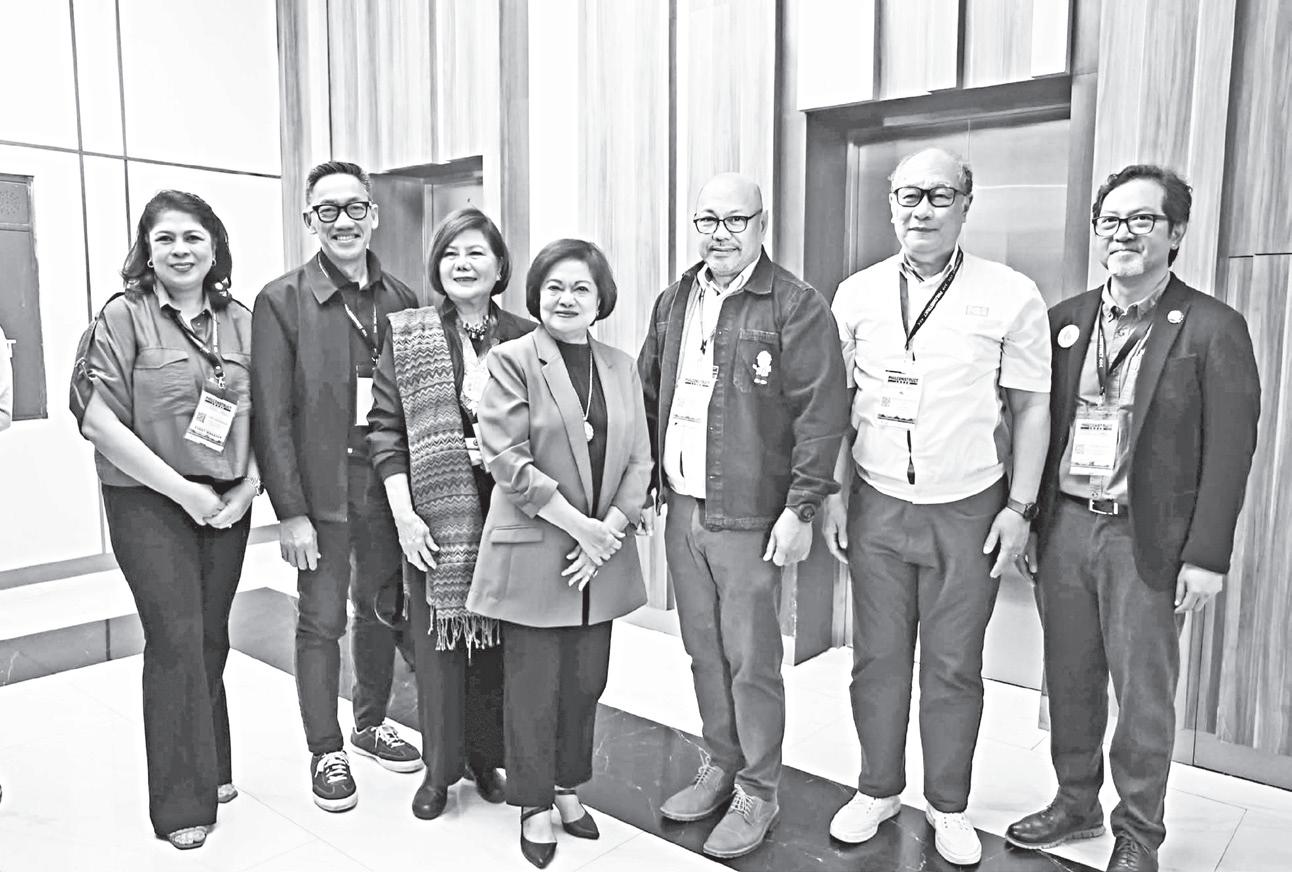
percent,
crediting the construction industry for its contribution to employment
and economic activity. Devanadera also shared Clark’s tourism achievements, noting its recognition as the region’s top tourist destination for two consecutive years. She invited attendees to explore the Freeport zone’s business opportunities and pledged CDC’s support in connecting contractors and stakeholders with investors.
“The B2B engagement does not stop here. We are committed to facilitating partnerships and ensuring Clark remains a thriving destination for investment, business, and tourism. Clark is open to everyone ready to grow and contribute to its dynamic economy,” the CDC chief added. Philconstruct Luzon 2025, aiming to promote collaboration and advance the construction sector, ends April 5.
TDuring the gathering, Pasang Masda president Roberto “Ka Obet” Martin noted to Lacson that they enjoyed “kotong-free” days when he headed the Philippine National Police from 1999 to 2001.
“We remember the time when police were extorting us, and all that disappeared when Senator Ping Lacson was Chief PNP. He cleaned up the police force, and extortion disappeared,” he said in Filipino. “What he did as Chief PNP was exemplary, not only for the transport sector but also for the whole country when he headed the national police,” he added. Lacson, whose father Buenaventura was a jeepney driver and operator, has been an ally of jeepney drivers and operators since his days as chief of the PNP, when he rid the police force of “kotong cops.”
The senator said he was inspired to get rid of kotong cops after seeing his father return home tired because he had to deal with mulcting cops. Butch Fernandez
HE Third Fisherfolk Congress, held in early April in San Jose, Occidental Mindoro, brought together over 150 municipal fisherfolk from across the province to promote maritime peace, fisherfolk security, and sustainable livelihoods in the West Philippine Sea (WPS).
With the theme “Kaunlaran at Kapayapaan sa Kanlurang Dagat ng Pilipinas,” the two-day interagency activity was spearheaded by the National Security Council (NSC) in partnership with the Bureau of Fisheries and Aquatic Resources (BFAR), the local government of San Jose, Department of Social Welfare and Development (DSWD), and other national agencies, as part of the government’s effort to empower coastal communities at the frontline of WPS protection and development. The first day featured a capacity-building session led by the Philippine Coast Guard (PCG), which provided fisherfolk with hands-on training in first aid, emergency response at sea, and disaster preparedness. This was followed by a validation process conducted by DSWD for the rollout of financial assistance under the Assistance to Individuals in Crisis Situations program.
On the second day, fisherfolk received briefings from BFAR, PCG, Armed Forces of the Philippines (AFP), and other agencies on various programs, maritime security
measures, and ongoing government interventions in the West Philippine Sea. A panel discussion and open forum provided space for fisherfolk to engage in dialogue with security agencies and officials, sharing pressing concerns, local challenges, and recommendations aimed at improving their living and working conditions.
Livelihood Support from BFAR awarded two 62-footer fishing vessels, each worth 10 million pesos, to fisherfolk associations in San Jose and Paluan, as part of the Bureau’s Capacitating Municipal Fisherfolk Program. The awarding of these vessels is just the beginning, with more fisherfolk in the province to be considered for future support.
In addition, BFAR also provided fishing gear, including multiple hook-and-line sets, to select fisherfolk associations in San Jose, Paluan, and Mamburao.
The Bureau is expanding its support for small fisherfolk by committing to provide postharvest interventions, fuel subsidies, and the implementation of policies that cater to their socio-economic needs.
As the Bureau scales up its support to the fisherfolk in the West Philippine Sea through the Livelihood Activities to enhance Fisheries Yields and Economic Gains in the WPS or LAYAG-WPS Program, National Director Elizer S. Salilig encouraged the fisherfolk to register and organize themselves into associations and cooperatives. “We are encouraging our
registered fisherfolk to create their own associations or cooperatives so that they can access the full range of livelihood and capacity-building programs offered by BFAR. We are ready to assist you in organizing,” he said.
The Bureau also reminded fisherfolk of the need to comply with fisheries laws and actively support the campaign against illegal, unreported, and unregulated fishing.
In his closing remarks, BFAR Spokesperson and Information Chief
Nazario C. Briguera affirmed the agency’s dedication to uplifting the lives of fisherfolk: “You are our partners—the agencies are merely channels of your blessings. Let us unite; we, as public servants, will strive to support you. The Third Fisherfolk Congress reaffirmed the government’s enduring commitment to strengthening the role of municipal fisherfolk as stewards of the nation’s marine wealth, champions of peace, and contributors to the country’s food security and maritime sovereignty.

By Malou Talosig-Bartolome
THE Department of Foreign Affairs urged China to ensure that three Filipinos arrested for alleged espionage in China are accorded due process and allowed to be visited by the consul.
Sources said the three Filipinos accused of espionage were alumni of the scholarship sisterhood program of Palawan and Hainan provinces.
Chinese media identified the Filipino suspects as David Servañez, Albert Endencia and Nathalie Plizardo.
According to the report of China Central Television (CCTV), Servañez was
first spotted loitering near military installations in China. Later, he was arrested after he was caught taking photos of military activities.
In the CCTV video, Servañez admitted having been recruited and trained by a “self-proclaimed” intelligence agent who goes by the name Richie Herrera.
Servañez said Herrera told him to take advantage of his long-term stay in China by filming military facilities. The photos were allegedly stored in encrypted files. In exchange, he was given monthly incentives. The interrogation on Servañez later led to the arrest of two fellow scholars— Endencia and Plizardo.


The DFA is mum on the details of the arrest.
Last November 14, 2024, Palawan Gov. Dennis Socrates penned a letter to DFA Secretary Enrique Manalo asking for assistance to help locate Servañez. He was last seen on November 2 and was supposed to travel from Hainan Normal University in Haikou, Hainan, to Wenchang City.
Socrates said Servañez, a Brookespoint resident, was on his way to Wenchang City for a job interview.
Sources said Endencia and Plizardo found work in China after their scholarship stint in Hainan ended. Endencia is a factory
worker, while Plizardo is a teacher.
DFA spokesperson Ma. Teresita Daza said the department has been formally made aware of the allegations against the three Filipinos.
“The department has conveyed to the Chinese government to ensure that these allegations are tried with due process and with full respect to the rights of the said Filipinos in accordance with domestic law and the Philippines-China Consular Agreement,” Daza said in a statement.
The Philippine Consulate General in Guangzhou, which has consular jurisdiction over Hainan, is providing legal support and other necessary assistance to the three
Filipinos. She said protecting the rights and interests of the three Filipinos “remains the prime priority for the Philippine government.”
In a press conference in Beijing on Thursday, Chinese Foreign Ministry spokesman Guo Jiakun said, “China’s judicial and relevant authorities will strictly handle the case in accordance with law and protect the lawful rights and interests of the personnel involved.”
The foreign ministry spokesman also raised the matter of alleged Chinese spies previously arrested by the Philippine government.
Guo accused the Philippines of “concocting a series of so-called Chinese spy cases” in the past months. “This is a typical act of stigmatization and politicization based on presumption of guilt in the absence of clear evidence. We firmly oppose that and have lodged protests against the Philippines more than once. China urges the Philippines to stop shadow-chasing and making false accusations, handle the cases concerning Chinese citizens in a just manner and in accordance with the law, and effectively protect the lawful rights and interests of Chinese citizens in the Philippines,” Guo said.
ABy Jovee Marie N. Dela Cruz
NTIPOLO
CITY—Alyansa para sa
Bagong Pilipinas senatorial candidates on Friday stressed the need for increased government support for livelihood and job creation in Rizal Province, particularly through targeted funding and holistic community development.
Speaking at a news conference of the Alyansa Para sa Bagong Pilipinas senatorial slate in Antipolo City, former Senate President Vicente “Tito” Sotto III emphasized the importance of allocating dedicated budgets for livelihood and agricultural initiatives in provinces like Rizal.
“Well, I think the technique necessary is for additional funding for the different provinces, and definitely for Rizal, so that they may have a separate budget especially for livelihood and agriculture and whatever is necessary,” Sotto said.
“Currently, their budget depends on internal revenue allotments, which are often insufficient. We’ve long proposed— alongside Senator Ping Lacson—that
there should be direct funding support for livelihood and agriculture at the provincial level,” he said.
Former Department of the Interior and Local Government (DILG) Secretary Benhur Abalos underscored the urgency of developing localized solutions to address the employment challenges of relocated informal settlers.
“One of the major problems when relocating informal settlers is the lack of jobs in the new area,” Abalos noted.
“You’re moving people far from where they used to work, which disrupts their livelihoods.”
He cited a model he implemented as DILG chief when relocating settlers to Cavite.
“The formula we used was simple: the relocation site must be just one jeepney ride away from employment opportunities. We also made sure job placement and schools were available. We addressed all the common fears—work, education, and housing,” he added.
Abalos said a similar strategy could be applied in Rizal by transforming blighted
areas into sustainable communities.
“We can turn these areas into vibrant communities by integrating places of work, TESDA training centers, and schools. That way, people don’t need to leave. Everything they need is within reach,” he said.
Reflecting on his time as a local chief executive, he underscored the buying power of LGUs and their potential to support agriculture in nearby provinces like Rizal.
“When I was mayor, we supported farmers by purchasing produce, especially during times of drought in Nueva Ecija. LGUs can play a crucial role in supporting agriculture,” Abalos said. He proposed that LGUs across Metro Manila could adopt a similar approach to support Rizal’s farmers.
“Just imagine if all Metro Manila LGUs bought agricultural produce from Rizal. With proper incentives and a wellstructured program, this could significantly boost the province’s economy,” he added.
Empower barangay
MEANWHILE , senatorial candidate and
Makati City Mayor Abby Binay vowed to push for legislative measures that will empower local government units, with a special focus on barangays.
“You need a voice in the Senate who will advocate for professionalizing and prioritizing barangays,” she said. “We often focus on mayors and provinces, but barangays are the most basic unit of public service and deserve more attention.” Binay also highlighted her advocacy for disaster risk reduction and the welfare of emergency response workers—critical issues for a province like Rizal, which is vulnerable to natural disasters.
“One of the things I plan to push in the Senate is to ensure that all disaster risk reduction and management [DRRM] personnel have proper insurance coverage, including GSIS benefits,” Binay stressed. Binay and other Alyansa candidates received a key endorsement from Rizal Governor Nina Ricci Ynares and former Governor Casimiro Ynares in Antipolo City. Rizal currently has a voting population of 1.67 million.
THE Department of Education (DepEd) has directed the Bagong Silangan High School in Quezon City to expedite the investigation of a recent bullying incident in the school.
“We have instructed the school to provide the necessary support to the involved learners,” said Dennis Legaspi, Media Relations Chief-Office of Education Secretary Juan Edgardo “Sonny” Angara, referring to the viral video of a female student being verbally and physically attacked by some of her classmates.
Legaspi said that a meeting has been set with the School’s Child Protection Committee to conduct a thorough investigation and ensure all parties are heard.
“We are committed to ensuring that the bullying victim and all affected learners receive the support they need and their
safety and well-being are prioritized throughout the investigation process,” he added.
DepEd’s Learner Rights and Protection Division (LRPD) is offering technical assistance to the school in implementing preventive measures and ensuring proper responses to bullying.
“We are also reviewing the school’s compliance with anti-bullying policies and providing additional training to staff as needed,” he said.
DepEd, he said, remains committed to protecting the well-being of all learners and ensuring a safe, supportive school environment.
Alarming prevalence
LAST year, researchers from the De La Salle University and the Second Congressional

Commission on Education (Edcom 2) released findings of several studies on bullying in the Philippines, titled, “Understanding Bullying in Philippine Education: Impacts and Opportunities for Change 1,” with the results highlighting the alarming prevalence of bullying in schools.
“One of the most striking findings in the Program from International Student Assessment [PISA] 2018 results was that the Philippines had the highest percentage of bullying among all participating countries and territories [OECD, 2019]. This trend was replicated in the PISA 2022 assessment although the percentage was lower in this round of assessment [OECD, 2023],” said Dr. Allan B.I. Bernardo, university professor and fellow from DLSU.
According to the PISA 2019, at least 65 percent of Filipino students reported being
victims of any type of bullying at least a few times in a month, with 40 percent being bullied frequently (once a week or more). On the other hand, the PISA 2022 reports that one out three Filipino students are being bullied in schools. This is about 43 percent of girls and 53 percent of boys in the Philippines encounter bullying incidents multiple times a month. This is much higher than the OECD average of 20 percent of girls, and 21 percent of boys.
DepEd clarified that there were actually reports collated annually at the Central Office coming from divisions; however these remain unverified. The data shows, however, that from 2013 (the year the Anti Bullying Law was passed) to 2018, the number of reported bullying cases surged from 1,158 to 20,172.
Claudeth Mocon-Ciriaco

By Lauran Neergaard AP Medical Writer
WASHINGTON—A vac -
cine to fight dementia?
It turns out there may already be one—shots that prevent painful shingles also appear to protect aging brains.
A new study found shingles vaccination cut older adults’ risk of developing dementia over the next seven years by 20 percent.
The research, published Wednesday in the journal Nature, is part of growing understanding about how many factors influence brain health as we age—and what we can do about it.
“It’s a very robust finding,” said lead researcher Dr. Pascal Geldsetzer of Stanford University. And “women seem to benefit more,” important as they’re at higher risk of dementia.
The study tracked people in Wales who were around 80 when receiving the world’s first-generation shingles vaccine over a decade ago. Now, Americans 50 and older are urged to get a newer vaccine that’s proven more effective against shingles than its predecessor.
The new findings add another reason for people to consider rolling up their sleeves, said Dr. Maria Nagel of the University of Colorado Anschutz Medical Campus, who studies viruses that infiltrate the nervous system. The virus “is a risk for dementia and now we have an intervention that can decrease the risk,” Nagel said. With Alzheimer’s and other forms of dementia on the rise in an aging population, “the implications of the study are profound,” Dr. Anupam Jena, a Harvard physician and health economist, wrote in a Nature commentary.
What is shingles?
covered shingles can spur formation of a sticky protein called amyloid that’s one of the hallmarks of Alzheimer’s.
Do shingles vaccines protect against dementia?
ADULTS who get recommended vaccines tend to have other brainhealthy habits including exercising and a good diet, which made it hard to prove an extra benefit.
Stanford’s Geldsetzer took advantage of “a natural experiment” in Wales, which opened shingles vaccinations with an age limit: anyone 80 or older on September 1, 2013, was ineligible but those still 79 could squeeze in. Comparing seniors who just met or just missed that cutoff would mimic a research study that randomly assigned otherwise similar people to be vaccinated or not.
Geldsetzer’s team analyzed more than 280,000 medical records and found evidence that vaccination

did offer some protection against dementia. At the time, people received a first-generation vaccine called Zostavax.
ANYONE who’s had ever had chickenpox—nearly everybody born before 1980—harbors that virus for the rest of their life. It hides in nerves and can break out when the immune system weakens from illness or age, causing painful, blister-like sores typically on one side of the body that last for weeks – what’s called shingles. About 1 in 3 Americans will get shingles, according to the Centers for Disease Control and Prevention. While most recover, it sometimes causes severe complications. If it infects an eye it can cause vision loss. Up to 20 percent of shingles patients suffer excruciating nerve pain months or even years after the rash itself is gone.
What’s the link between shingles and dementia?
IT’S not clear exactly how Alzheimer’s and other types of dementia form. But certain viruses that sneak inside the nervous system—especially members of the herpes family including the chickenpox virus— have long been suspected of adding to genetic and other factors that make people more vulnerable.
Last summer, doctors at Boston’s Brigham and Women’s Hospital reported that an episode of shingles could raise someone’s risk of dementia by about 20 percent.
Partly, it’s because that virus can cause inflammation, bad for organs including the brain. It also can directly infect blood vessels in the brain, causing clots and impeding blood flow, said Colorado’s Nagel, a risk both for strokes and for dementia.
More intriguing, her lab also dis-
By Jose Cielito Reganit
MANILA—The Department of Social Welfare and Development (DSWD) led the Philippine delegation at the Third Global Disability Summit (GDS) 2025 in Berlin, Germany, from April 2 to 3.
In a statement on Monday, Assistant Secretary Elaine Fallarcuna of the DSWD’s International Affairs, Attached and Supervised Agencies (IAASA) said the summit had provided an avenue for member-states to demonstrate their support and commitments in upholding the rights of persons with disabilities (PWDs), as outlined in the United Nations Convention on the Rights of Persons with Disabilities (CRPD).
“The DSWD was honored to represent the Philippines in this significant summit that sought to promote the rights of all persons with disabilities across the world. In

this gathering, the agency signified the government’s commitments to ensure that persons with disabilities would have access to employment, digital information and communication, accessible infrastructures, disaster risk reduction, and social protection programs, among others,” Fallarcuna said.
She emphasized that these initiatives are crucial steps toward breaking down barriers that hinder the full participation of PWDs in Philippine society.
Fallarcuna was joined by Philippine Sports Commission (PSC) Commissioner Walter Francis Tor -
res; National Council on Disability Affairs Executive Director Glenda Relova; NCDA OIC Deputy Executive Director Dandy Victa; National Anti-Poverty Commission (NAPC) Director Ana Cañeda; Department of Health (DOH) Senior Health Program Officer Maria Cristina Raymundo; and, Department of Education (DepEd) Supervising
An important next step is testing whether today’s vaccine, Shingrix, also offers dementia protection, Nagel said. Another research group recently reported some evidence that it does. Vaccine manufacturer GSK last month announced a collaboration with UK health officials to track seniors’ cognitive health as they get vaccinated.
Geldsetzer also hopes to further study that earlier shot to see if the type of vaccine might make a difference.
What are the shingles vaccine recommendations?
SHINGRIX is a onetime vaccination, given in two doses a few months apart. The CDC recommends it starting at age 50 for most people but also for younger adults with certain immune-weakening conditions—including those who years ago got that first-generation shingles vaccine. Fewer than 40 percent of eligible Americans have gotten vaccinated. Side effects including injectionsite pain and flu-like fever and achiness are common. The CDC cautions if you’re currently fighting another virus such as the flu or Covid-19, to wait on a shingles shot until you’re well.
While there’s no proven prevention for dementia, doctors also recommend other commonsense steps to lower the risk. Stay socially and cognitively active. And control high blood pressure and, for people with diabetes, high blood sugar, both of which are linked to cognitive decline.
The Global Disability
is a triennial event that advances the rights and inclusion of PWDs through international cooperation. This year’s event is co-hosted by the Governments of Germany and Jordan, alongside the International Disability Alliance.
To these Black retirees, the federal civil service now under attack was a path to middle class
By Gary Fields The Associated Press
WASHINGTON—Evelyn
Seabrook was able to buy a home even though she had only a high school diploma.
Glenn Flood worked his way up the career ladder to become a public affairs officer for former Defense Secretary Donald Rumsfeld. And Calvin Stevens had a dual military and federal service career that took him to high levels in both.
Now in their late 70s and early 80s, the three retirees are part of a generation of Black Americans who used the military and federal civil service to pursue the American dream. They acknowledge there were challenges. But they believe they received more opportunities in the military and as government employees than they would have in a private sector where racial discrimination and patronage were common at the time they were ready to enter the workforce.
“I am glad I chose to be in federal service,” Seabrook said. “Even with all the drawbacks, my personal life was enhanced by my federal job.”
Seabrook, Flood and Stevens have more than 120 years of combined military and federal service.
As leaders in various capacities in the National Active and Retired Employees Association, they are plugged into the siege federal employees are under during the opening weeks of President Donald Trump’s second term. It started with the elimination of programs promoting diversity, equity and inclusion and has expanded to a culling of the federal workforce under Elon Musk, a special adviser to the Republican president. Musk also seeks to eliminate agencies as head of the Department of Government Efficiency, or DOGE.
They say one thing being lost in the attacks on the federal workforce is its important history as a stepping stone into the middle class for minorities when paths were limited, in particular for Black Americans.
Speaking from their homes near Orlando, Florida, and in Decatur, Georgia, and Palm Springs, California, the retirees said when they came into the military and federal service decades ago, the push wasn’t about diversifying the workforce. Rather,

the opportunities were about ending the discrimination that left qualified people of color on the outside of many workplaces.
Then-President Lyndon Johnson addressed the problem of employment discrimination through law and executive order. That opened the door wider to the US Postal Service, the military and many other federal jobs where Black professionals got their first chance to pursue executive-level jobs, said Marc Morial, president and CEO of the National Urban League.
“The progress in federal civilian employment was far faster and far greater than it was in the private sector,” which was “far slower to create the opportunity to run nondiscriminatory hiring practices,” he said.
The result was a rise in the Black middle class, especially in places like Washington, D.C., where workers entered the system in lower-level jobs but rose through the ranks based on performance, he said.
“At one point, DC had the highest median income for African Americans in any city in the country,” Morial said.
For now, the federal government is the largest single employer in the US with about 3 million workers, which includes 600,000 with the US Postal Service but not the active duty military. While Black Americans are nearly 14 percent of the population overall, they make up nearly 19 percent of the federal workforce.
Proud of being hired and promoted on merit
Seabrook, 80, began her Social Security Administration career in New York City in 1966 and worked for the federal government for more than 39 years.
The irony of hearing and seeing DEI used as a signal for unworthiness is that there was no affirmative action or special programs to recruit people like her when she started working.
“The only initiatives I have seen was if you were a veteran” and points were added to your test score, she said from her home in Florida. “In terms of ethnicity, culture, race, that wasn’t even part of the picture. We weren’t thinking about it then.”
Even the full impact of the Civil Rights Act of 1964 came years after she started working. She took tests and those scores led to interviews. Preferences weren’t “part of my life or how I got promoted or not. I got promoted because I could understand the work. I never went in under incentive programs.”
Her own career path was not entirely smooth and included complaints to the Equal Employment Opportunity Commission. Nevertheless, she continued moving up in positions and even helped train new employees. “It certainly was very helpful in me maintaining a level of living that I probably could not have done elsewhere,” Seabrook said.
Middle-class life not something to take for granted FLOOD, 78, was a Navy officer who also served in the reserves and at the
Pentagon, where he was one of the regular briefers for former Secretary of Defense Donald Rumsfeld. He said federal service was instrumental in helping people of color show their abilities.
Flood said the times now are “scary” because of the impact on the federal workforce and how departments and agencies are responding to the administration’s moves to gut them: “There’s important work out there, and not everything is in D.C,” he said from his home in the Southern California desert.
His old department, Defense, issued instructions saying it would no longer acknowledge Black History Month, Native American Heritage Month or similar commemorations of culture and history. But he said recognizing that history is important to show how far certain groups have come.
His father also was in the Navy but could serve only as a steward.
“I am very proud of my civil service and my Navy career” and its role in his “middle-class life,” Flood said. “That was not something you could take lightly.”
Saddened to see the civil service under attack
STEVENS, 77, spent 31 years in the Air Force and Air Force Reserves and more than three decades with the General Services Administration. He, like Flood and Seabrook, said his experience wasn’t always smooth, but that he had mentors who helped. As his career went forward, he would take it upon himself to get whatever training he needed, paying out of his own pocket so he could advance. One goal was to serve as a role model and mentor for others, and he suggested that recruitment efforts include Historically Black Colleges and Universities in the Atlanta area, where he was based and now lives. He recalls people of color coming into the service with degrees, often advanced ones.
He realizes that some might have viewed him merely as an affirmative action hire, “but I met the qualifications,” he said. “I was educated and I was trying to advance, taking classes on my own” to train and prepare for each position he sought. Associated Press video journalist Sharon Johnson in Atlanta contributed to this report.








do not consider their workplace to be a ‘healthy space’

FEWER employees report having a positive experience at work, with Trust Index scores generally trending downward in many organizations, according to recent studies by Great Place To Work Philippines with over 750,000 Philippines-based employees represented in the Trust Survey.
The percentage of employees who consider their workplace a psychologically and emotionally healthy space has decreased from 82 percent in 2023 to 78 percent in 2025. Workplace engagement has also declined to 83 percent from 87 percent in 2023.
“While providing resources and equipment is essential, today’s professionals also need
environments where they can speak openly and find meaning in their work, along with clarity of expectations from leaders across organizations. These remain paramount to the success of the company as a whole,” said Antoniette Mendoza-Talosig, managing partner at Great Place To Work Philippines, during the recent Best Workplaces awards ceremony.
Technological advancements and other factors are changing workplaces and it is companies that continue to value human connections amid these changes that are setting the standards.
“Three major forces are changing our workplaces faster than ever: technological advancements and AI integration, Gen Z employees redefining work expectations, and economic challenges impacting job security,” said Mendoza-Talosig.
Artificial intelligence is a disruptive technology that can be polarizing. Some employees welcome it because it is helpful, but there are those in the workforce who see it as a threat to their jobs.
According to Jakob Nielsen, co-founder of interface and user experience consulting firm Nielsen Norman Group, “Using generative AI [like ChatGPT] in business improves users’ performance by 66 percent averaged across three case studies.”
“More complex tasks have bigger gains, and less-
skilled workers benefit the most from AI use,” said Nielsen.
“Our data shows that amid this change overdrive, while more employees feel equipped with necessary tools to be productive, the quality of human relationships at the workplace is weakening,” said Mendoza-Talosig.
The awards ceremony honored organizations across three categories based on workforce size. Synchrony Global Services Philippines Inc., [24]7.ai Philippines, and Accenture led the large company category, while DHL Express, Hilton and Cisco secured top spots in the medium category. Meanwhile, Kollab topped the small company category for the second consecutive year, with EXCA Education Migration and Visa Services and I’M Hotel also receiving awards. In total, the event recognized 50 organizations that have successfully balanced innovation and healthy workplace cultures
Synchrony Global Services Philippines Inc., a subsidiary of Synchrony Financial, manages call center operations, and back office support, while Accenture is a global professional services company with leading capabilities in digital, cloud and security.
[24]7.ai Philippines is a technology solutions company that provides BPO services to international clients. ■
‘ADOLESCENCE’ WILL BE SHOWN IN SCHOOLS ACROSS THE UK TO SPARK CONVERSATIONS ON SOCIAL MEDIA HARM
BY SYLVIA HUI The Associated Press
LONDON—The makers of hit Netflix show Adolescence have sparked a conversation in Britain and beyond on how to protect children from violent misogyny and other harmful content on social media.
Now they have the ear of British Prime Minister Keir Starmer, who welcomed the filmmakers to Downing Street on Monday for talks on child protection. Starmer’s office said he backed an initiative by Netflix to stream the drama series for free to secondary schools across the country, so that as many teens as possible can watch it.
The show, filmed in England, explores the difficult questions that arise when a 13-year-old boy is accused of the fatal stabbing of a girl in his school—and how much social media interactions that are largely impenetrable to parents and teachers may have played a part.
Netflix says since the drama launched in March, it has amassed 66.3 million views worldwide and has become one of the most talked-about UK series in recent memory.
Starmer said it was difficult watching the drama with his 14-year-old daughter and 16-year-old son. But showing the drama widely in schools will “help students better understand the impact of misogyny, dangers of online radicalization and the importance of healthy relationships,” his office said.
“It seems like the whole nation is talking about Adolescence and not just this nation,” Starmer said.
“As a dad, I have not found it easy to watch this with children, because it connects with the fears and worries that you have as parents and adults.”
“There isn’t one single policy lever to pull. It’s
actually a much bigger problem than that,” he added.
“And that’s the devastating effect that the problem of misogyny has on our society.”
Jack Thorne, a co-writer on the show, said the team behind Adolescence made it to provoke a conversation.
“So to have the opportunity to take this into schools is beyond our expectations,” he said. “We hope it’ll lead to teachers talking to the students, but what we really hope is it’ll lead to students talking amongst themselves.”
Actor Stephen Graham, a co-creator of the drama who stars as the boy’s father, has told The Associated Press he wanted the narrative to focus on the seemingly ordinary life of the accused.
He said that when a knife crime among young people takes place, the first reaction may be to question the background of the murder suspect and how they were raised.
“But what if it’s not the family?” Graham asked. “We’re all maybe accountable. School. Society. Parents. Community.”
SOMA SARA, who founded a charity focused on highlighting child-on-child sexual violence and what she calls “rape culture” in schools, said recent evidence shows that the problem is “aging down” to children younger than 10—and it may be too late to tackle misogynistic attitudes by the time children turn 13.
Her charity, Everyone’s Invited, has collected thousands of anonymous testimonies from women and girls describing groping, assault, sexist namecalling, inappropriate touching and other abusive behavior they experienced on school grounds.
Of those submissions, about 1,600 took place in elementary schools, she said.
“The testimonies show how early this starts, and how it’s children abusing children—that’s just the devastating reality,” Sara said.
Sara said that banning social media among children, like Australia did last year for those under 16, isn’t pragmatic. Instead, her group is leading education programs in schools to help children understand how to critically evaluate the pornography or misogynistic narratives they are exposed to.
“We feel the generational gap has never been wider. Parents need to be digitally literate themselves, and understand all these apps—Snapchat, YouTube, Instagram, TikTok—because that’s what your children are spending hours scrolling,” she said.
‘WE’RE ALL RESPONSIBLE’
THE success of Adolescence has come during growing concern over children’s use of smartphones and the easy availability of pornography and extreme misogynistic content on social media pushed by controversial influencers like Andrew Tate and his brother, Tristan.
The dual US and British citizens face charges of human trafficking and forming an organized criminal group to sexually exploit women.
Gavin Stephens, chair of the National Police Chiefs’ Council, warned last week that “the harmful effect of Tate is plain to see.” Police in the UK are now dealing with more than a million crimes related to violence against women and girls each year, or a fifth of all recorded crime.
“This is everyone’s problem. And this is what Adolescence says: when a child is accused, everyone’s to answer,” Sara said. “It’s about realizing that we’re all responsible.”
PHL can harness huge economic potentials of AI, says leading global online learning platform
BY RIZAL RAOUL S. REYES
FILIPINOS can harness the vast economic potentials of artificial intelligence (AI) as its young population continues to embrace the technology, according to an official of a major global online learning platform.
In a recent press briefing, Karine Allouche, global head of enterprise at
the announcement of the expansion of partnership between the company and iPeople to deliver AIpowered education to 45,000 students.
She also pointed out that Filipino universities will have a special role to play in helping the country to unlock the next major economic opportunity, with AI expected to contribute P2.8 trillion to businesses in 2030.
iPeople Inc., the education joint venture of the Yuchengco Group of Companies and Ayala Corp., is in the forefront of future-proofing Filipino students by expanding its long-standing partnership with Coursera, one of the world’s largest and best known online learning platforms.
Right now. iPeople has tripled its student impact to 45,000 from 15,000 learners.
As one of Coursera for Campus’ top three customers globally, iPeople is advancing its mission to equip students and faculty across its six universities and colleges with industry-recognized skills, microcredentials, and Generative AI (GenAI)-powered learning, preparing them for an AI-driven job market.
The success of Coursera started in 2019 when it partnered with Mapúa University, Mapúa Malayan College Laguna (MMCL), Mapúa Malayan College Mindanao (MMCM), Mapúa Malayan Digital College (MMDC), University of Nueva Caceres (UNC), and National Teachers College (NTC).
Alfredo I. Ayala, president of iPeople, told reporters in a recent press briefing that students can now earn 20 percent to 30 percent of their academic credits through Coursera courses, further embedding industry micro-credentials into their degrees.
As industries evolve, Ayala said higher education must keep pace. iPeople’s integration of AI and microcredentials aligns with CHED’s vision for flexible, skills-based learning pathways, ensuring that Filipino graduates earn globally recognized industry certifications that enhance their employability both locally and internationally.
“iPeople is committed to providing a globally competitive, AI-enabled and skills-based education to as many Filipinos as possible,” Ayala pointed out.
“iPeople Inc. has been a trailblazer in leveraging online learning to integrate cutting-edge skills and micro-credentials into their curriculum, redefining how universities prepare graduates for a digitalfirst, globalized world,” said Allouche, global head of enterprise at Coursera.
She added that AI has the potential to widen gaps and at the same time provide a huge opportunity to expand access and bridge skill divides. “We’re proud to strengthen our collaboration with iPeople as they scale their efforts to equip thousands of students with job-aligned skills and credentials, helping them stand out to employers, excel in their careers, and set new standards for innovation in higher education.”
France’s antitrust watchdog fines Apple for problems with App Tracking Transparency
($162 million) on Monday over
protecting users from apps snooping on them because its introduction resulted in abuse of competition law.
The French Competition Authority said the aim of Apple’s App Tracking Transparency (ATT) requiring iPhone and iPad apps to ask users for permission before tracking them was not in itself open to criticism. But it ruled that the “way in which it was implemented was neither necessary nor proportionate to Apple’s stated objective of protecting personal data.” Apple rolled out ATT starting in April 2021 as part of an update to the operating system powering the iPhone and iPad. The feature forces apps to obtain permission before collecting data to target users with personalized ads. While the feature was designed to tighten up privacy, it faced criticism from Big Tech rivals that it would make it harder for smaller apps to survive without charging consumers.
The fine, punishing Apple for abuse of its dominant position in mobile app distribution, covers the period from April 2021 to July 2023. But the amount is a pittance for the iPhone maker, which earned $124 billion in revenue in the final three months of last year. The watchdog said the feature’s rollout resulted in users being barraged by pop-ups from third-party apps requesting their consent. It bemoaned how the proliferation of these consent windows made it “excessively complex” for app users to navigate the iOS environment.
It also questioned the system’s neutrality, saying it penalized the smallest publishers, which depend to a large extent on the collection of third-party data to finance their activity. Apple said in a statement that ATT gives users more privacy control “through a required, clear, and easy-to-understand prompt about one thing: tracking.”
“That prompt is consistent for all developers, including Apple, and we have received strong support for this feature from consumers, privacy advocates, and data protection authorities around the world,” the company said. AP THE Pokémon Company (headquartered in Minato-ku, Tokyo, with CEO Tsunekazu Ishihara) shares the following news about the Nintendo Switch software title, “Pokémon Legends: Z-A.”
When night falls in Lumiose, a battle zone—an area fenced off in red with cutting-edge holographic technology—appears somewhere within the city. Every night from dusk till dawn, Trainers compete in fierce Pokémon battles within these battle zones as part of the Z-A Royale.
The Z-A Royale is a competition where Pokémon Trainers whose skills have been recognized are invited to battle to determine who is the strongest. Competing Trainers earn ranks starting from Rank Z all the way to Rank A. All participants start out at Rank Z and aim to rise through the ranks by winning Pokémon battles against other competitors. If a Trainer reaches Rank A, they won’t just earn the honor of being known as the strongest around—apparently, they may also have one wish granted. After you prove your Pokémon battle skills, you will be thrust into the fierce tournament alongside either Urbain or Taunie—a fellow competitor in the Z-A Royale. To raise your rank in the Z-A Royale, you must take on promotion matches and win. In promotion matches, you’ll go head-to-head against a tough Trainer who’s also looking to move up through the ranks. Be sure that you have raised your Pokémon well before taking on promotion matches.
Managing your time well is key to progressing in the Z-A Royale each day. At night, when the battle zone is active, challenge tough Trainers in the Z-A Royale. During the day, catch Pokémon in the wild zones, train them, and prepare for the next night. It’s also a good idea to use the prize money you earn in the Z-A Royale to stock up on any necessary items for battle.
More information is available at legends.pokemon. com/en-us/.













Why it’s time to

YOU’VE probably lived this story once or twice.
It’s 9 PM. You’re standing at your front door, arms full—one hand gripping a bag of groceries, the other balancing a tray of eggs— fumbling through your bag for keys that seem to have disappeared. The porch light flickers. Your frustration grows.
Flash forward to another day—you’re halfway to Tagaytay, playlists queued, windows down, when your partner turns to you with that dreaded question:
“Did you lock the door?” Silence. You can’t remember. You spend the next hour thinking about it instead of enjoying the drive.
Then there’s your mom. She loves surprise visits, and today she’s early. You’re not home—you’re at the cinema, popcorn in hand, watching the opening credits roll. She texts: “Anak, andito na ako sa labas.” You read it with a sinking feeling. She’ll be waiting for hours.
Three different days, same recurring problem: keys, access, and being in the wrong place at the wrong time. But it doesn’t have to be this way—not when smart living starts right at your front door.
Smart locks used to be considered a luxury item—reserved for techies or something you’d only see in foreign TV shows. But in 2025, they’ve quietly become an essential upgrade for modern Filipino households—made more accessible by Larx Trading, the exclusive distributor of Philips EasyKey Smart Locks in the Philippines.
SMART locks, once a fixture of sci-fi stories and Korean dramas, have become not just attainable but practical. For many, the decision to switch started with curiosity—sparked especially during the pandemic when keyless entry became a common feature in the shows and movies people were bingeing at home.
Viewers saw characters enter homes with just a fingerprint—no keys, no stress—and began to ask:
“Why can’t we have that here?” That curiosity quickly turned into real-world demand.
But more than just eliminating the need for keys, smart locks redefine control. Imagine being able to open your door with your fingerprint, send a temporary code to a guest, or check from your phone whether your door is locked—all without being physically present.
For busy households, smart locks streamline routines. Parents can assign PIN codes to their kids.
Airbnb hosts can send time-sensitive access to guests.
Helpers or delivery riders no longer need someone to be home to open the door. And if someone forgets their code, unlocking remotely through an app takes just a few taps.
Philips Smart Locks, in particular, are known for their seamless user experience. From the premium 9000 and 7000 series with facial recognition, and the 5000 Series with futuristic palm recognition, to the accessible 1000 and 3000 Series designed for practicality and affordability, there’s a model for every type of Filipino household.
GETTING THE RIGHT SMART LOCK
NOT every smart lock fits every door—a fact that many first-time buyers overlook. That’s why personalized assessments and nationwide site inspections have become a key part of the installation process in the Philippines. Depending on whether your door is made of wood or metal—and depending on its thickness or swing—certain models will work

better than others.
This hands-on approach is offered by Larx Trading to help customers avoid compatibility issues, structural damage, or unnecessary modifications. While smart locks may appear plug-and-play, doors in the Philippines often expand or contract due to our hot and humid climate. These environmental factors can shift door alignment over time, affecting performance.
Proper installation considers these natural movements, and in some cases professional realignment may be required later to keep the system working flawlessly.
WHO’S USING SMART LOCKS IN THE PHILIPPINES?
FROM households to businesses, more and more Filipinos are embracing smart locks—not just for security, but for convenience and peace of mind. It’s becoming common to see smart locks installed not only on main doors, but also on side entrances, pedestrian gates, and even private bedrooms. Whether for home, business, or specialized areas like server rooms, anyone who uses a door can benefit from the convenience and flexibility of digital entry. These setups offer layered access control— particularly useful for families with helpers, frequent visitors, or household staff.
AND WHAT ABOUT CONDOS?
CONDO dwellers are catching on too. While here in the Philippines, most buildings don’t yet include smart locks as a standard feature, many now allow residents to install them—provided they comply with approved models and installation methods.
In fact, developers in areas like BGC and Rockwell have begun accrediting trusted smart lock installers and endorsing specific models that meet their building standards. This gives condo owners peace of mind, knowing their upgrade is both compliant and compatible.
And with the rise of short-term rentals and serviced units, condo residents are increasingly choosing smart locks to streamline guest access and improve security—no key drop-offs or physical handovers required.

THE MODERN STANDARD FOR HOMEOWNERS
AS our lives become more fast-paced and digital-first, it’s no surprise that Filipinos are rethinking how they manage their homes. Traditional locks rely on physical keys—items that can be lost, easily copied, or forgotten. Smart locks eliminate this worry entirely.
Smart locks support a variety of access options including face recognition, palm scanning, fingerprints, RFID cards, PIN codes, and smartphone apps. Some systems even provide real-time alerts, so you know exactly who entered your home—and when.
Many models also feature audit trails, auto-lock timers, and integration with smart home assistants like Google and Alexa making everyday routines faster, safer and more convenient.
HOW TO CHOOSE THE RIGHT ONE
SELECTING a smart lock begins with choosing a reputable brand. Since these are long-term investments tied directly to your home’s security, it’s important to look for options that prioritize quality craftsmanship, encryption, and after-sales support. Next comes compatibility. Not all locks work on all doors, which is why consultations and proper measurements are critical. A mismatched unit can lead to costly adjustments—or worse, a malfunction down the line.
Lastly, think about how you live. Do you want app-based control? Prefer a fingerprint scan? Need time-based access for guests or staff? Choose the features that suit your daily habits. The best smart lock isn’t the most expensive—it’s the one that fits your life perfectly.
Helping drive this transition is Larx Trading—the largest smart lock distributor and home technology wholesaler in the Philippines. As the exclusive distributor of Philips EasyKey, Larx is dedicated to making Filipino homes smarter, safer and more future-ready. A KEY-LESS FUTURE SMART locks aren’t just a passing trend. They are
PHILIPPINE Business for Education (PBEd) has hailed the signing of the implementing rules and regulations (IRR) for the “Enterprise-Based Education and Training [EBET] Framework Act.”
The industry-led advocacy group’s executive director Justine Raagas said that the IRR is a crucial step in strengthening industry-led skills development and preparing a futureready Filipino workforce: “By linking
education institutions and industries, we can slowly but surely lessen jobsskills mismatch.”
Raagas added that, consequently, “this will enable learners to do good in their chosen careers, and employ -
ees to constantly update their skills.”
The EBET Framework Act, or Republic Act 12063, enhances technical and vocational education and training or TVET by integrating enterprisebased programs that are directly aligned with industry standards and needs, providing better opportunities for Filipino workers to secure quality jobs or obtaining entrepreneurial expertise. It was signed into law by Pres. Ferdinand R. Marcos Jr. on November 7, 2024.
The IRR will empower businesses to take the lead in training, allowing enterprises to customize programs that meet evolving industry needs, including those shaped by artificial
intelligence and emerging technologies. It will also allow for tax incentives, training allowances, and reduced barriers for small and medium enterprises to expand participation in skills development.
“It is one thing to know which jobs are in demand, and another to ensure that the workforce has the necessary skills to meet those demands effectively,” Raagas explained. “By encouraging greater industry participation in workforce development, we can ensure that training programs are relevant and responsive to the needs of a rapidly changing economy, ultimately creating a robust talent pipeline for the future.”
RAFFY—a person deprived of liberty (PDL)—sat in the corner of his male dormitory with a weathered notebook on his lap. His eyes gleamed with newfound hope as he animatedly arranged colorful blocks of code on the computer screen.
“Before this, I never thought I could learn something so modern, so relevant,” he shared. “Scratch has shown me that I still have a future waiting for me out there.”
Raffy is one of 10 PDLs at the Iligan City Jail-Male Dormitory (ICJMD) who recently completed a course on Visual Programming using “Scratch.” This initiative is part of the “Behind the Bars” program—a groundbreaking effort led by the Mindanao State University-Iligan Institute of Technology (MSU-IIT) in partnership with the Bureau of Jail Management and Penology Region X (BJMPRO-X). Through education and skills training, the program offers PDLs like him the chance to reclaim their lives and prepare for reintegration into society.
The Visual Programming course conducted on March 25 by the College of Computer Studies under the guidance of Prof. Alquine Roy Taculin introduces participants to the basics of coding via Scratch—a beginner-friendly platform.
Designed to foster creativity and critical thinking, the course marked a significant leap for PDLs who had limited access to technology. As Prof. Taculin explained: “This…is more than just an introduction to coding: It’s a lifeline—a chance for these individuals to build a
AT pioneering culinary school CCA Manila, education goes beyond the basics—it is a rigorous, evolving craft led by world-class chef-instructors committed to excellence.
This dedication was tested recently when five of CCA Manila’s chef-instructors underwent the rigorous American Culinary Federation (ACF) accreditation process. Their success not only solidifies their expertise, but also ensures that CCA Manila students receive the highest quality education aligned with global culinary standards.
“The largest professional organization for chefs in North America, ACF is known for its strict certification process that evaluates culinary professionals on a comprehensive scale,” said CCA chancellor Dr. Veritas Luna. “This includes mastery of techniques, food safety, sanitation, time management and menu planning.”
ACF assessors Chef Dorothy Johnston
CEC, CCE, AAC; Chef Michael Harants
CEC, CCE, AAC; and Chef Jeremy Abbey CEC, CCE, CCA, CEPC, AAC recently visited CCA Manila’s main campus in Bonifacio Global City and assessed select CCA chef-instructors.
The first time CCA Manila received a certification was in 2006, which made it the first institution to acquire an American Culinary Federation Education Foun -
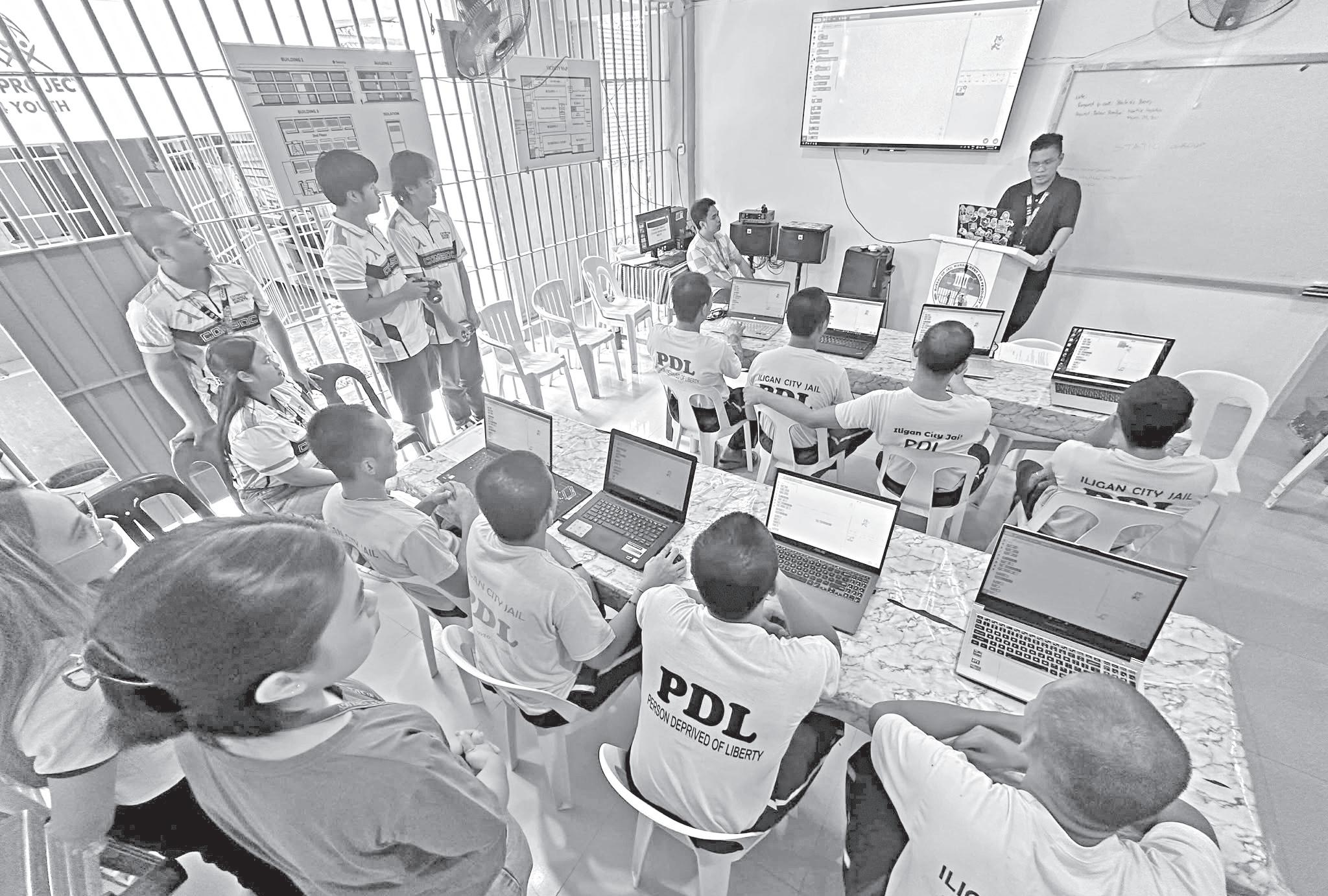
foundation for their future.”
Hands-on skills
ANOTHER corner of the ICJMD was the scene of the “Basic House Wiring” course also held on the same date. Facilitated by Prof. Roque Requino of MSU-IIT’s College of Education, the program trained 20 PDLs in the fundamentals of electrical wiring over a 40-hour curriculum.
By the end, participants were not only certified to perform basic wiring jobs, but also equipped with the confidence to pursue careers in this field.
“This course gives PDL the tools they need to create opportunities for themselves,” Prof. Requino remarked.
For program participant Vheejay,
the experience was transformative: “I never thought I could learn something so practical. Now I have a skill that can support me and my family when I leave.”
Reclaiming dignity through sports REHABILITATION at ICJMD goes beyond classrooms and toolkits. On March 21, the facility’s basketball court became a space of renewal as 25 PDLs took part in a basketball officiating course under MSU-IIT’s “Reclaiming Freedom through Sports, Dance and Exercise” initiative, which was also under the “Behind the Bars” program.
Organized by the university’s Physical Education Department, the course uniquely blended physical activity and mental discipline.
For many participants like Mark, the program was more than about mastering rules and regulations: “On the court, I felt like I was part of something bigger. It reminded me of what teamwork and respect feel like.”
Program of possibilities
THE courses provide a glimpse into the comprehensive “Behind the Bars” program launched in November 2023 that provided PDLs with pathways to personal and professional growth.
Renewed in February 2025 through a memorandum of agreement, the program includes offerings like “English Literacy,” “Financial Literacy,” “Painting,” “Soap Making” and more. Each course is tailored to address the PDL’s diverse needs, fostering not just skills but also self-expression and self-worth.
City jail warden JCINSP Carmelo A. Corsame sees the programs as “lifelines” for PDLs: “[They prove] that rehabilitation works when you invest in people. It gives them tools to rebuild their lives and, more important, the belief that they can.”
The ICJMD may be a place of confinement, but through “Behind the Bars,” it has become a space of transformation and hope.
For Raffy, Vheejay, Mark and many others, the program is not just a matter of acquiring skills; it is about reclaiming their lives one lesson at a time—a reminder that within the most unlikely walls, seeds of renewal can take root and thrive.
dation-accredited culinary program in the Asia-Pacific Region.
ACF experience FOR CCA Manila’s program manager Chef Kerwin Funtanilla, the accreditation process was both an honor and a challenge:
“The ACF certification is a validation of the things you have learned and experienced. There was a ton of pressure to pass.
Cooking for the esteemed ACF team was an honor and privilege…hearing them say they enjoyed my cooking was one of the best moments from the experience.”
Having previously earned his “Certified Chef de Cuisine” or CCC title, Funtanilla found the new assessment to be a continuation of his growth: “The industry is always evolving, and one must learn to be open to improvement and change to be successful. This [became] even more evident with the certification.”
Notably, both him and Chef Miguel Lorino achieved the “Certified Executive Chef” certification, which is the secondhighest level.
Lorino found the experience nervewracking but rewarding: “We were given 3 hours for preparation, which seemed long at first. But when you are actually taking the exam, 3 hours feels like 30 minutes. It was intense in terms of skills, mentality and physical strength needed just to

complete the exam.” More than just a test of cooking ability, the ACF accreditation process reinforced the importance of discipline, problemsolving, and the continuous pursuit of excellence. According to Lorino, the certification should not just be a leverage of excellence: “It is about inspiring students to realize that learning is never-ending. Even their instructors undergo training and certifications to improve their skills and knowledge.”
Excellence and lifelong learning
ACCOMPLISHED pastry chef Anne Atanacio found that the ACF assessors were encouraging, which helped ease the pressure—until the feedback session began: “They can be really tough with their
CHEF-instructors Miguel Lorino (from left) and Ram Caronongan, program manager Chef Kerwin Funtanilla and pastry chef Anne Atanacio
comments, especially at the executive chef level. But that’s part of the learning process.”
A proud CCA graduate, Chef Jay Recio compared the experience to one of the toughest exams he had ever taken: “It felt like I was taking my CCA comprehensive exam all over again. When the chef informed me that I had one hour left, the adrenaline kicked in, and I just went with it.”
His advice to aspiring chefs is simple: “Be prepared. Be confident, but not overly. And when the moment comes, go ‘beast mode.’”
Meanwhile, Chef Krystle San Juan also approached the certification through thorough preparation: “I felt really nervous, so I started thinking about possible recipes I
Editor: Mike Policarpio
Basic literacy and numeracy
SENATORIAL candidate and Makati City mayor Abby Binay has zeroed-in on strengthening early childhood education as a crucial step in improving the country’s quality of education.
For the mayor, the local education sector should focus more on developing students’ basic literacy and numeracy skills in their early years that will enable them to cope with more complex knowledge and skills as they move up the education ladder.
Binay said there is a need to monitor Early Childhood Care and Development or ECCD, along with daycare, as she believes that “foundation is key.” She flagged that efforts to bridge the learning gap by Grade 5 or Grade 6 might be too late.
The local chief executive (LCE) believes that basic proficiency in reading, math and science should be developed from preschool to Grade 3, so that students will be equipped with essential skills such as reading comprehension and knowledge of basic mathematical concepts and scientific fundamentals.
Binay cited as an example the “K-12 Basic Education” program of the Department of Education, which aimed to produce skilled, highly employable senior high-school graduates who can opt to join the workforce after graduation.
She posed the question about the learners having a good foundation during K-10 to make them employable after senior high school: According to her, even if they are taught skills in senior high—if they lack foundational skills like basic English and basic numeracy—it would be difficult to get hired.
Makati’s LCE also emphasized the importance of implementing interventions for learning gaps not later than Grade 3: “Poor literacy and numeracy levels should already be addressed [by that level through appropriate interventions. Otherwise, many students will be left behind and] unable to keep up with more advanced lessons. They may even drop out eventually.”
During her administration, the city strengthened its ECCD through innovative measures such as the launch of a program for 4- to 5-year-old learners not yet eligible for Kindergarten. Equipped with a set of modules and other items, learners are taught basic social skills, basic hygiene and basic ability that will prepare them to cope well and excel in their first year of schooling.
It also launched in 2023 “Project FEED, or ‘Food for Excellent Education and Development’” that provided nutritious and delicious snack foods and beverages to more than 42,000 public elementary-school students during school days.
To date, the city continues to implement “Project MILES, or ‘Mathematics Intensive Learning Enhancement for Students’” aimed at improving Grade 1 to 10 students’ math competencies. It has invested millions annually in “Koobits:” a Singaporean Math software program, while shouldering the honoraria of teachers conducting the program.
Since 2024, qualified students enrolled in the Special Science and Math Curriculum of Makati City’s select public elementary and high schools were granted a P1,500 monthly stipend to draw in more students to the Science, Technology, Engineering and Mathematics or STEM educational track, where graduates are in high demand in the global workplace and have the chance to land high-paying jobs.
could prepare in advance. I did extensive research on the test and asked those who had already taken it about their experience.”
The rigorous practice helped ease her nerves and allowed her to focus fully on execution: “The certification was straightforward and heavily skills-focused. One thing I learned was that small miscommunications can make a big difference, so it is important to always ask for clarification.”
San Juan sees the certification as more than just a title, but a commitment to continuous learning: “Beyond essential skills like knife techniques and discipline, the ability to learn and relearn is just as important. Growth is a continuous process, and there is always room for improvement.”
CCA Manila takes great pride in its accredited “Diploma in Culinary Arts & Technology Management” program. The accreditation underscores the credibility and quality of its culinary education, ensuring that its offerings meet the high standards set by the ACF. This is beneficial for students, as being accredited by ACF opens networking opportunities, enhanced employment prospects, and assurance that their education is at par with global practices.
As graduates of CCA Manila, students are already certified after 1 year of work, creating public trust by ensuring established standards, accountability and high levels of professionalism. The ACF recognition signifies that the institution is deeply committed to maintaining up-to-date and current practices in culinary education, subsequently supporting its graduates’ local and international endeavors.
Enrollment at CCA Manila is now open for those who want to train with globally accredited chef-instructors and be part of a globally recognized culinary institution. Take the first step in fulfilling culinary dreams by visiting www.cca-manila. edu.ph or sending a message to talktous@cca-manila.edu.ph or on Facebook/Instagram: @ccamanila.
Tourism Editor: Edwin P. Sallan

DAVAO del Sur was one of the first provinces in Mindanao I visited. In 2009, I flew to Davao City with my then-girlfriend, Marianne. From there, we made our way to Camp Sabros, an outdoor retreat in Kapatagan, Digos City, known at the time for having one of the longest zip lines in the country, an 800-meter ride above the treetops.
On this return trip, nostalgia is inevitable—not about a failed relationship, but about my early years of travel. This time, however, the focus was different. Instead of simply taking in the landscapes, we explored the province’s cultural heritage. Doing so, I learned about traditional crafts, music, and dance, traditions that have been passed down through generations and that today remain a vital part of the region’s identity.
Discovering Heritage in the Communities
NOT wasting any time, we first set out on a community where cultural bearers are in play to preserve the culture of the BagoboTagabawa community.
We had lunch in their community of Sta. Cruz, Davao del Sur, where history, tradition, and a deep reverence for Apo Sandawa, their original name for Mount Apo, shape daily life. As one of the three dialectical groups of the Bagobo people, the Bagobo-Tagabawa of Davao del Sur are a proud indigenous group known for their rich traditions, intricate weaving, and deep spiritual connection to nature. Living in the foothills of Mount Apo, they keep age-old rituals, colorful beadwork, and rhythmic music. They have long called these foothills home, where they persevere to preserve their customs within their ancestral domain.
The chieftain’s wife welcomed us warmly, sharing that the community takes pride in hosting visitors. To mark the occasion, they performed traditional dances which acts out expressions of gratitude for a bountiful harvest. The meal that followed was just as memorable: chicken, tenderized inside bamboo, accompanied by taro cooked in coconut milk, steamed sayote tops, and grilled fish. At Humbled by Nature Farm in Matanao, the B’laan people welcomed us with graceful traditional dances and hauntingly beautiful chants—expressions of an olden culture still very much alive.
The B’laan, neighbors to the T’boli, inhabit the rugged landscapes near Lake Sebu and the T’boli municipalities of South Cotabato, stretching through Sarangani, General Santos, southeastern Davao, and the shores of Lake Buluan in North Cotabato. Known for their masterful brasswork, intricate beadwork, and the revered tabih weave, their artistry reflects a deep cultural lineage. Their attire is usually adorned with embroidered garments decorated with elaborate beads. The women, in particular, wear heavy brass belts, their dangling tassels tipped with tiny bells, announcing their presence long before they arrive.
Further into Davao del Sur, in the town of Bansalan, we visited the home of the late Salinta Monon (1920–2009), a revered Bagobo-Tagabawa master weaver and a 1998 recipient of the Gawad sa Manlilikha ng Bayan (GAMABA), or National Living Treasure Award. For most of her 89 years, Monon devoted herself to the meticulous art of weaving Inabal, the traditional Bagobo-Tagabawa textile, ensuring that her knowledge was passed down to younger generations. Today, her legacy endures. Near her old home, the community is establishing a weaving center, where artisans like Estela Barra,


Monon’s first student, continue the intricate process of crafting Inabal from abaca fibers. They also demonstrate the traditional way of wearing the Tangkulo, a scarf that serves as both an adornment and a symbol of leadership among the Bagobo-Tagabawa.
Through dedication and collective effort, the weavers of Bansalan are keeping Monon’s artistry alive, ensuring that the vibrant threads of their culture remain unbroken, woven into the future just as they have been for generations.
Relishing the Cold Setting of the Kapatagan Highlands BEYOND the culture-rich experiences that defined our journey, we found ourselves drawn to the lush farmlands that fuel the local flavors of this region. Strawberries, coffee, and an array of fruits and vegetables flourished in abundance.
But first, coffee. Or coffee farm I must say. After our community visits, we hurried off to Balutakay Coffee Farmers Association (BACOFA) in Bansalan. Over a rich, aromatic brew, we uncovered the transformative power of coffee, how these farmers are shap -


ing lives and elevating coffee experiences worldwide with their distinctive blends.
At Lao Integrated Farm, I was reminded once again that random discoveries fuels every journey, and this time, it came in the form of an unexpected delicacy: the Peanut Butter fruit. True to its name, its taste was strikingly reminiscent of peanut butter. This farm, a sustainable organic demo site in Bansalan, Digos City, stands as a testament to innovation. Its founder, Benjamin Lao, recognized as a “scientist-farmer” by the Department of Science and Technology, has turned barren land into a thriving paradise.
The farm’s workforce is largely composed of members of the Bagobo community, with many of their children benefiting as scholars of the farm, ensuring that sustainability extends beyond agriculture into education and opportunity.
The caffeine trail continued to Sir Ped’s Coffee, a perfectly perched coffee shop that pairs its brews with breathtaking views of the province’s mountain ranges. Every sip here enriches the flavor of the coffee with the cool climate of the place.
Our planned ascent to Mt. Apo was
WOrdoña
ESTERN Visayas has been dismembered again when Negros Occidental joined Negros Oriental to form Negros Island Region. Despite this, Hiligaynon remains the lingua franca with Kinaray-a, Capiznon, and Aklanon also spoken in other provinces of Panay.
Marine Reserve
OUR odyssey starts in Negros Occidental in Sagay City, exemplar of authentic ecotourism. First destination was Carbin Reef which is part of the Sagay Marine Reserve, one of the largest marine reserves in the country covering 32,000 hectares. Swimming and snorkelling aside, we were an eager audience to the culinary artistry of Mark Lobaton, son of Vicente, the kinilaw master. Using vinegar as a denaturing agent and other spices, he transformed the fresh flesh into a presumed cooked state. This reminded me of my experience with Batangas fishermen who ate their fresh catch with vinegar and calamansi. Kinilaw, which has been around for a thousand years, is best taken as an appetizer or pulutan. To complete the island feast, lechon was also served.
Mangrove Tours
SEAFOOD sated, we boarded our boats on our way to Suyac Island Mangrove Eco-Park.
on sustainable tourism development. Welcomed by Sagaynon hospitality, we feasted on island treats and were graced with a song and dance number. What impressed me was the keen knowledge of the local mangrove guides. I learned that Suyac is home to one of the oldest and biggest mangroves particularly Sonnerata Alba or commonly called pagatpat.
Museo sang bata
AS if all that new knowledge on mangroves was not enough, back on the mainland, we were gladly educated, this time by adorable gifted children who showcased their tour guiding skills in explaining the wonders of the maritime world. They are the young boys and girls of Museo Sang Bata sa Negros, the first hands-on and interactive museum outside Metro Manila, which aims to promote the love of the sea. As a scuba diver and a lifelong learner of marine science, I am amazed at the know-how of these young eco-warriors.
Kayaking THE following day was equally exciting. We decided to flex some muscles by kayaking at Lapus-lapus Bulanon Conservation Area. Ably assisted by kayaking guides, we were able to skillfully navigate the mangrove maze. Together with floating cottages, this area was declared by the City Government of Sagay as a local conservation area.
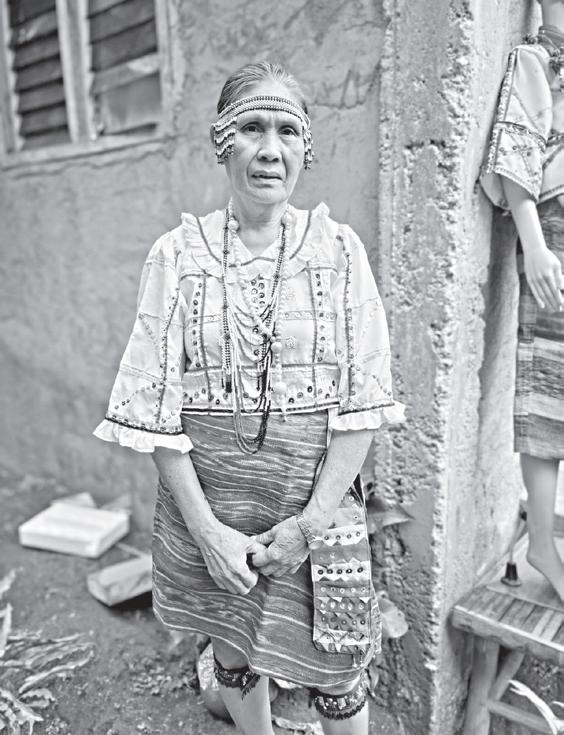

thwarted by erratic weather, but the foothills of Apo Sandawa in Bansalan had no shortage of scenic alternatives. A stop at Erry Cactus Farm and Adenium introduced us to a stunning collection of cacti and adeniums in a riot of colors. While my botanical expertise extends only as far as knowing that a cactus plant have thorny spines, I could easily see plant enthusiasts going crazy in this cacti dreamland.
At The Berries Farm Cabin & Restaurant in Bansalan, the cool mist added a touch of magic to our berry-picking experience. Strawberries, mulberries, and raspberries ripened under the foggy embrace of the highlands, making every handful of fruit feel like coveted pickings.
As we climbed higher into Kapatagan in Digos City, a brief pause at the fog-laden Lake Mirror, also called Lake Cometa, offered a moment of stillness, and a chance to fly my drone camera. The lake’s glassy surface mirrored the shifting skies and the elusive silhouette of Mt. Apo’s cloud-veiled summit.
Further along, Jardin de Señorita and Haven’s Dew provided Instagrammable backdrops with bursts of floral beauty and

iconic landmarks—the Eiffel Tower, the Merlion, a windmill, an old Volkswagen car and a telephone booth—all waiting to be framed into picture-perfect memories. For our stay in the highlands, we split our time between two mountain resorts. At Camp Sabros, adventure reigned supreme as we soared over the landscape on a dual zipline and rumbled through rugged terrain in a 4x4, all while keeping our eyes locked on the imposing peak of Mt. Apo. Meanwhile, Montefrio Garden Resort welcomed us with mist-kissed mornings and a pace of life that encouraged just chilling in the cold. Between buffet feasts and bottomless cups of coffee, the mountain air carried an undeniable charm, one that made the idea of ever leaving feel like a distant thought. Overall, my return trip to Davao Del Sur not only evoked memories of Camp Sabros and the green countryside and mountain ranges vividly recall. It also given me a chance to unearth the rich local culture that thrives beneath the province’s stunning natural landscapes, culture that, to this day, shapes the identity of its people in ways both insightful and profound.
This is the first fully community-based ecotourism project in line with the city’s thrust
Community of Colors
FROM the blue waters of Sagay Marine
Reserve, we found ourselves on board colorful trisikads. We were now in Pook Bougainvillea, the Community of Colors. These bedecked pedicabs were steered gleefully by trained sikad drivers with their narratives on the art and the environment of their neighborhood while quietly pedalling the narrow streets of the coastal mangrove barangay. Artist Nunelucio Alvarado, the nationally and internationally renowned social realist of Sagay, conceptualized the Community of Colors at Purok Bougainvillea and have painted houses with uniquely Alvarado designs he calls painted matters as his way of celebrating arts in the community.
The trisikad ride ends in Margaha beach where Master Nune has set up his home and gallery with his wife Sally. Margaha is known for its black sand which locals claim to be therapeutic. Seven poles (haligi) were installed on the beach to represent the seven disciplines of art. Margaha Beach Resort has been a haven for artists and visitors who enjoy the sunrise and sunset with a cup of iced coffee at Kape Albarako.
Indigenous Communities
THE Western Visayas Odyssey continued with visits to indigenous communities who were the original settlers of Negros. After a river crossing, we reached Bgy. Puey, Sagay in the upland area of Negros Occidental to visit the Ata community. We were fortunate to visit them during a special occasion, Ata Day. From three households, it has grown to a bigger community in a five-hectare land. WESTERN VISAYAS ODYSSEY

They now have a day-care center and a clinic. During the festivities, the Atas performed an Inagong courtship dance, a ritual for honey gathering, a bird calling technique called pispis and a weaving demonstration. Handmade bags were available and endemic plants were planted during the day. What piqued my interest was our slow food lunch which consisted of river eel and monitor lizard which surprisingly were palatable. This formerly nomadic group have, more or less, settled in their ancestral land but are striving to preserve their Inata culture.
Ancestral House FROM Bacolod, Negros Occidental, we ferried to neighboring Iloilo which has been named UNESCO City of Gastronomy. With this reputation in mind, we were eager to have breakfast at the Jalandoni-Montinola House in Jaro, Iloilo now called Agatona 1927 Museum Cafe. Named after Doña Agatona Escarilla Arguelles, this ancestral house was built in 1927 in neoclassical architecture

style. It is located right next to Graciano Lopez Jaena Park (Jaro Plaza) and overlooks Jaro Cathedral. With its old world charm and delectable Ilongo dishes, the Agatona 1927 Museum is a must-see destination.
From Jaro, we drove to Calinog to visit the Panay-Bukidnon. This Visayan indigenous people are scattered in Iloilo, Capiz, and Antique. One of the cultural bearers of their community was the late Federico Caballero. He was declared a National Living Treasure for his epic poetry chants. These chants were documentation of oral literature particularly the ten epics in an extinct language related to Kinaray-a. Caballero had passed on several months earlier when we visited but we were able to meet his widow, Lola Lucia “Lucing” Caballero. Lola Lucing, herself, was a binukot. A binukot is a woman who is secluded from childhood until her marriage then she becomes nabukot. She is exempted from hard work, bathes at night and has servants. We also witnessed the Panay-Bukidnon do the welcome dance and

love triangle dance. At the Capiz Ecopark and Cultural Village, they gracefully performed a courtship dance. Crowd favorite was the slow cooking and tasting. At Nagpana, Barotac Viejo, we learned about the island’s first settlers and their love for their way of life. Coffee and nito bags were available for sale. To conclude the Western Visayas Odyssey, we visited the Panublion Museum in Roxas City, Sta. Monica Parish Church with its biggest bell, and capped by a


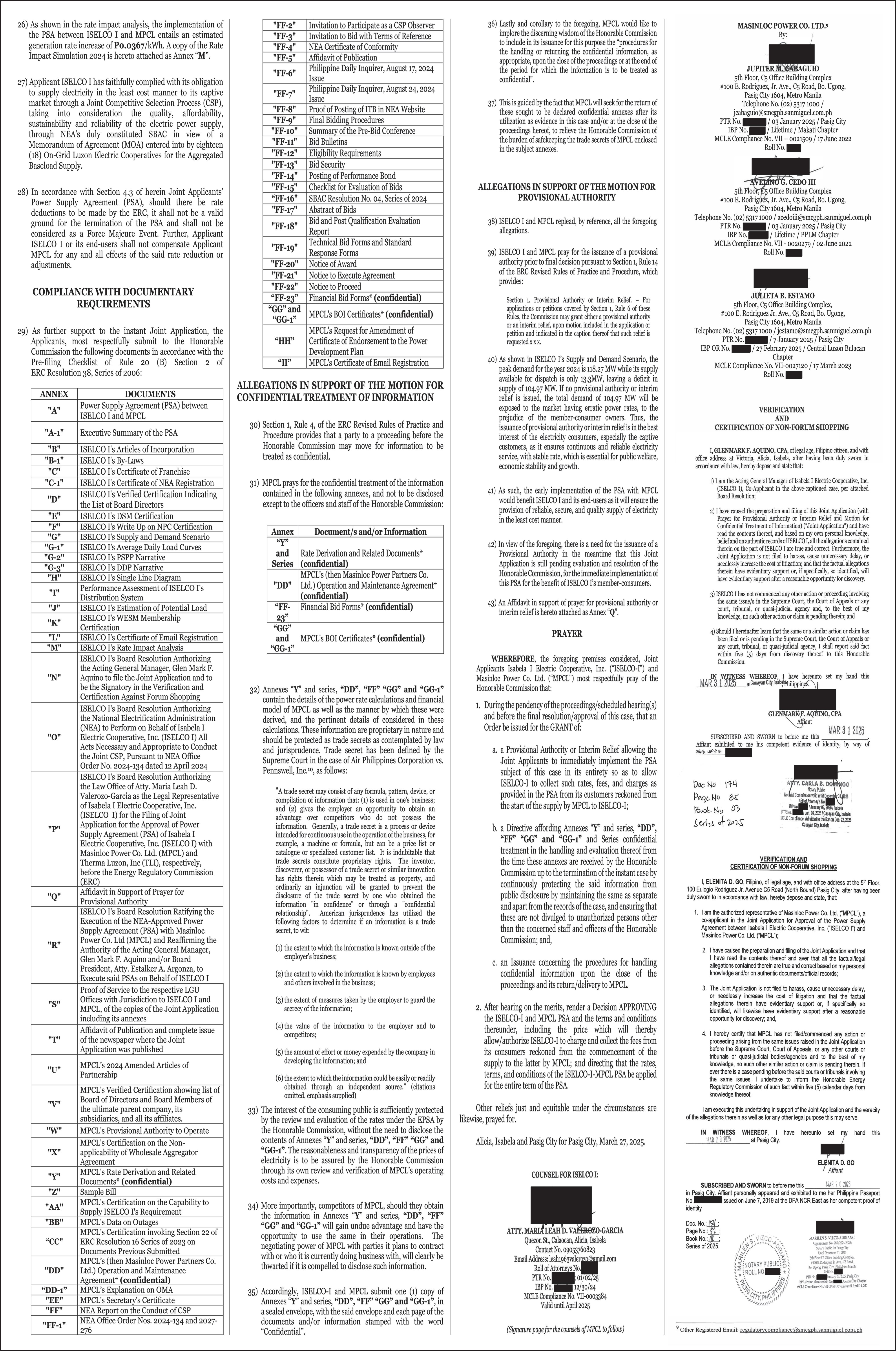
By Jiang Junzhe The Associated Press
HONG KONG—World shares
slid further Friday after US President Donald Trump’s tariffs sent shudders through Wall Street at a level of shock unseen since the Covid-19 pandemic pummeled world markets in 2020.
Everything from crude oil to Big Tech stocks to the value of the US dollar against other currencies has fallen. Even gold, a traditional safe haven that recently hit record highs, pulled lower after Trump announced his “Liberation Day” set of tariffs,’ which economists say carries the risk of a potentially toxic mix of weakening economic growth and higher inflation. In early European trading, Germany’s DAX lost 0.7 percent to 21,568.78 while the CAC 40 in Paris slipped 0.7 percent to 7,547.19. Britain’s FTSE 100 gave up 0.6 percent to 8,426.10. The future for the S&P 500 lost 0.4 percent while that for the Dow Jones Industrial Average shed 0.5 percent.
Markets in Shanghai, Taiwan, Hong Kong and Indonesia were closed for holidays, limiting the scope of Friday’s sell-offs in Asia.
Tokyo’s Nikkei 225 lost 2.8 percent to 33,780.58, while South Korea’s Kospi sank 0.9 percent to 2,465.42.
The two US allies said they were focused on negotiating lower tariffs with Trump’s administration.
Australia’s S&P/ASX 200 dropped 2.4 percent, closing at 7,667.80. Bangkok’s SET fell 2.6 percent.
In other trading early Friday, the US dollar fell to 145.87 Japanese yen from 146.06. The yen is often used as a refuge in uncertain times, while Trump’s policies are meant in part to weaken the dollar to make goods made in the US more price competitive overseas. The euro edged lower, to $1.1054 from $1.1055.
Trump announced a minimum tariff of 10 percent on global imports, with the tax rate running
much higher on products from certain countries like China and those from the European Union. Smaller, poorer countries in Asia were slapped with tariffs as high as 49 percent.
It’s “plausible” the tariffs altogether, which would rival levels unseen in more than a century, could knock down US economic growth by 2 percentage points this year and raise inflation close to 5 percent, according to UBS.
That’s such a big hit it “makes one’s rational mind regard the possibility of them sticking as low,” according to Bhanu Baweja and other strategists at UBS.
Trump has previously said tariffs could cause “a little disturbance” in the economy and markets. On Thursday he downplayed the impact.
“The markets are going to boom, the stock is going to boom and the country is going to boom,” Trump said as he left the White House to fly to Florida.
The S&P 500 sank 4.8 percent to 5,396.52 and the Dow Jones Industrial Average dropped 4 percent to 40,545.93. The Nasdaq composite tumbled 6 percent to 16,550.61.
Some of the worst hits wal -
loped smaller US companies, and the Russell 2000 index of smaller stocks dropped 6.6 percent to pull more than 20 percent below its record.
Investors knew Trump was going to announce sweeping new tariffs, and fears surrounding it had already pulled Wall Street’s main measure of health, the S&P 500 index, 10 percent below its all-time high.
Some analysts and investors believed Trump might use tariffs simply as a tool for negotiations, rather than as a long-term policy.
But he indicated Wednesday that he sees them as a way to bring factory jobs back to the United States, which could take years.
The Federal Reserve could cut interest rates to support the econ -
omy, but lower rates can push up inflation, already a worry given that US households are bracing for sharp increases to their bills due to the tariffs.
Yields on Treasurys tumbled in part on rising expectations for coming cuts to rates, along with general fear about the health of the US economy. The yield on the 10year Treasury fell to 4.04 percent from 4.20 percent late Wednesday and from roughly 4.80 percent in January.
A report Thursday said fewer US workers applied for unemployment benefits last week, better than economists were expecting. A separate report said activity for US transportation, finance and other businesses in the services industry grew last month, but by less than forecast.
Also early Friday, US benchmark crude oil shed $1.27 to $65.68 a barrel. Brent crude, the international standard, was down $1.26 at $68.88 a barrel.
By Hyung-Jin Kim & Kim Tong-Hyung
The Associated Press
SEOUL, South Korea—South Korea’s Constitutional Court unanimously removed Yoon Suk Yeol from office Friday, ending his tumultuous presidency and setting up a new election, four months after he threw the nation into turmoil with an ill-fated declaration of martial law.
The verdict capped a dramatic fall for Yoon, a former star prosecutor who became president in 2022, just a year after he entered politics.
In a nationally televised hearing, the court’s acting chief Moon Hyung-bae said the eight-member bench found Yoon’s actions were unconstitutional and had a grave impact.
“By declaring martial law in breach of the constitution and other laws, the defendant brought back the history of abusing state emergency decrees, shocked the people and caused confusion in the society, economy, politics, diplomacy and all other areas,” Moon said.
“Given the negative impact on constitutional order caused by the defendant’s violation of laws and its ripple effects are grave, we find that the benefits of upholding the constitution by dismissing the defendant far outweigh the national losses from the dismissal of the president,” the justice concluded.
Protesters erupt in jubilation and sorrow
ANTI-YOON protesters near the court erupted into tears and danced when the verdict was announced in the late morning. Two women wept as they hugged and an old man near them leapt to his feet and screamed with joy. The crowd later began marching through Seoul streets.
Outside Yoon’s official residence, many supporters cried, screamed and yelled at journalists when they saw the news of the verdict on a giant TV screen. But they quickly cooled down after their organizer pleaded for calm.
“We will absolutely not be shaken!” a protest leader shouted on stage. “Anyone who accepts this ruling and prepares for an early presidential election is our enemy.”
No major violence has been reported by late afternoon.
Korea faces an election with deep divisions
AN election will be held within two months for a new president. But a festering divide over Yoon’s impeachment could complicate South Korea’s efforts to deal with crucial issues like President Donald Trump’s
tariffs and other “America First” policies, observers say.
Yoon said in a statement issued via his defense team that he deeply regrets failing to live up to the public’s expectations, but stopped short of explicitly accepting the verdict. There have been fears he would incite efforts to resist his removal, as he earlier vowed to fight to the end.
He added that he will pray for the country and its people. “It has been the greatest honor of my life to serve our nation,” Yoon said.
Yoon’s ruling People Power Party said it would accept the decision, but one of Yoon’s lawyers, Yoon Kap-keun, called the ruling “completely incomprehensible” and a “pure political decision.”
Prime Minister Han Duck-soo, the country’s acting leader, vowed to maintain public safety and order and ensure a smooth transition to the next administration.
Surveys show Lee Jae-myung, leader of the main liberal opposition Democratic Party, is the early favorite to win the upcoming presidential by-election, though he faces several trials for corruption and other charges.
Lee welcomed the ruling and credited the South Korean people for “protecting our democratic republic.”
Crisis started with a night of chaos four months ago MARTIAL law lasted only six hours, but left behind a political crisis, rattling financial markets and unsettling the country’s diplomatic partners.
After announcing martial law late at night on December 3, Yoon sent hundreds of soldiers to the National Assembly, election offices and other sites. Special operations soldiers smashed windows at the assembly and scuffled with protesters, evoking traumatic memories of the country’s past military rules among many South Koreans.
Enough lawmakers, including some from the ruling party, managed to enter the assembly to vote down Yoon’s decree unanimously.
Some senior military and police officers sent to the assembly testified Yoon ordered them to drag out lawmakers to block the vote on his decree or to detain his political rivals. Yoon says the troops were deployed to the assembly simply to maintain order.
Yoon, 64, a conservative, was impeached by the National Assembly on December 14. The assembly accused him of violating the constitution and other laws by suppressing assembly activities, attempting to detain politicians, and undermining peace across the country.
In his final testimony at the Constitutional Court hearing, Yoon said his decree was a desperate attempt to draw public support of his fight against the “wickedness” of the Democratic Party, which had obstructed his agenda, impeached top officials and slashed the government’s budget bill. He earlier called the National Assembly “a den of criminals” and “anti-state forces.”
The Constitutional Court ruled Yoon infringed upon the Assembly’s right to demand martial law be lifted, the freedom of political party activities and the neutrality of the military. It also said Yoon’s political impasse with the opposition wasn’t the type of emergency situation that required martial law and that Yoon’s decree lacked required legal procedures such as deliberation by a formal Cabinet meeting.


Yoon still faces criminal charges YOON has been indicted on charges of rebellion in connection with his decree, a charge that carries the death penalty or a life sentence if convicted. He became the first South Korean president to be arrested or indicted while in office.
Yoon was released from jail in March after a Seoul district court ruled he did not have to be detained during that trial process. His removal from office also costs Yoon the presidential immunity that protected him from most criminal prosecutions. This means he could face other criminal charges, such as abuse of power, in connection with his martial law decree, some observers say.
The Associated Press writer Foster Klug contributed to this report.
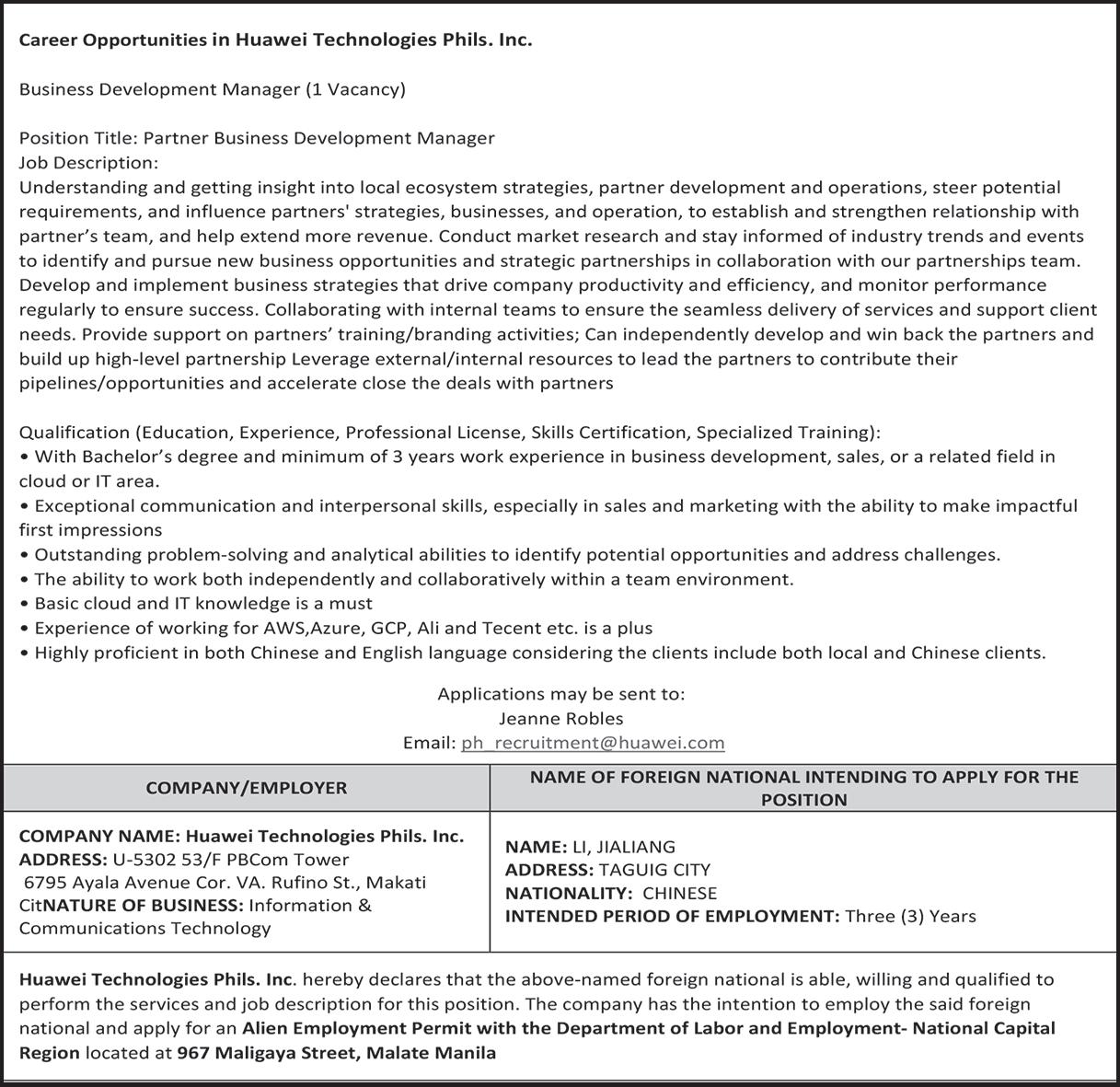

By Wafaa Shurafa & Natalie Melzer
The Associated Press
DEIR AL BALAH, Gaza
Strip—Israeli airstrikes
killed at least 100 Palestinians across the Gaza Strip on Thursday, including 27 or more sheltering at a school, according to Palestinian medical authorities, in a stepped-up offensive that Israel’s military said is intended to pressure Hamas and eventually expel the militant group.
The bodies of 14 children and five women were recovered from the school in the Tuffah neighborhood of Gaza City and the death toll could rise because some of the 70 wounded sustained critical injuries, said Health Ministry spokesman Zaher al-Wahidi. More than 30 other Gaza residents were killed in strikes on homes in the nearby neighborhood of Shijaiyah, he said, citing records at Ahli Hospital.
The Israeli military said it struck a “Hamas command and control center” in the Gaza City area, and said it took steps to lessen harm to civilians. Israel gave the same reason—striking Hamas militants in a “command and control center”—for attacking a United Nations building used as a shelter a day earlier, killing at least 17 people.
Hamas called the strike on the school a “ heinous massacre” of innocent civilians.
The strikes came as Israel’s military ordered more residents in parts of northern Gaza to move west and south to shelters, warning that it planned to “work with extreme force in your area.” A num-
ber of the Palestinians leaving the targeted areas did so on foot, with some carrying their belongings on their backs and others using donkey carts.
“My wife and I have been walking for three hours covering only one kilometer,” said Mohammad Ermana, 72. The couple, clasping hands, each walked with a cane.
“I’m searching for shelters every hour now, not every day,” he said.
Israel has issued sweeping evacuation orders for parts of northern Gaza ahead of expected ground operations. The UN humanitarian office said around 280,000 Palestinians have been displaced since Israel ended the ceasefire with Hamas last month.
The fresh evacuation orders came a day after senior government officials said Israel would seize large parts of the Palestinian territory and establish a new security corridor across it. To pressure Hamas, Israel has imposed a monthlong blockade on food, fuel and humanitarian aid that has left civilians facing acute shortages as supplies dwindle— a tactic that rights groups say is a war crime.
Hamas says it will only release the remaining 59 hostages—24 of whom are believed to be alive—in exchange for the release of more Palestinian prisoners, a lasting ceasefire and an Israeli pullout from Gaza. The group has rejected demands that it lay down its arms or leave the territory.
Another deadly day in Gaza OVERNIGHT strikes by Israel killed at least 55 people in the Gaza Strip, hospital officials said Thursday.


In the southern city of Khan Younis, officials said the bodies of 14 people had been taken to Nasser Hospital—nine of them from the same family. The dead included five children and four women. The bodies of another 19 people, including five children aged between 1 and 7 years and a pregnant woman, were taken to the European hospital near Khan Younis, hospital officials said. In Gaza City, 21 bodies were taken to Ahli hospital, including those of seven children.
Later in the day, strikes killed four more people in Khan Younis, according to Nasser Hospital, and another two people were killed in central Gaza and taken to Al Aqsa Hospital.
The attacks came as the Israeli military promised an independent investigation of a March 23 operation in which its forces opened fire on ambulances in southern Gaza. UN officials say 15 Palestinian medics and emergency responders were killed, and their bodies and ambulances were buried by Israeli soldiers in a mass grave.
The military initially said the ambulances were operating suspiciously and that nine militants were killed. The military said the probe would be led by an expert fact-finding body “responsible for examining exceptional incidents” during the war. Rights groups say such investigations are often lacking and that soldiers are rarely punished.
The head of the Palestine Red Crescent Society, Younes Al-Khatib, said Thursday he believed some of the medics were still alive when they were overtaken by Israeli
forces. The organization’s radio dispatchers heard a conversation in Hebrew between medics and Israeli soldiers after the ambulances had come under fire, Al-Khatib told members of the UN Security Council.
Riyad Mansour, the Palestinian UN ambassador, told the UN Security Council he was turning over a video he obtained, allegedly showing the moments leading up to the Israeli killing of 15 humanitarian workers in Gaza.
Mansour said the video shows that the aid workers, including eight members of the Palestinian Red Crescent Society, were traveling in emergency vehicles with the lights on at night to deconflict with Israeli Defense Forces. But, Mansour said, the video “found on the body of one of the martyrs,” shows that the Israeli army ambushed the vehicle despite the emergency lights.
Israeli war plans for Gaza
ON Wednesday, Prime Minister Benjamin Netanyahu announced Israel was establishing a security corridor across Gaza to pressure Hamas, suggesting it would cut off the southern city of Rafah, which Israel has ordered evacuated, from the rest of the Palestinian territory.
Israel has also reasserted control over the Netzarim corridor, a military zone that separates the northern third of Gaza from the rest of the narrow strip. Both that and another corridor, along Gaza’s southern border with Egypt, run from the Israeli border to the Mediterranean Sea.
Netanyahu said Sunday that Israel plans to maintain overall
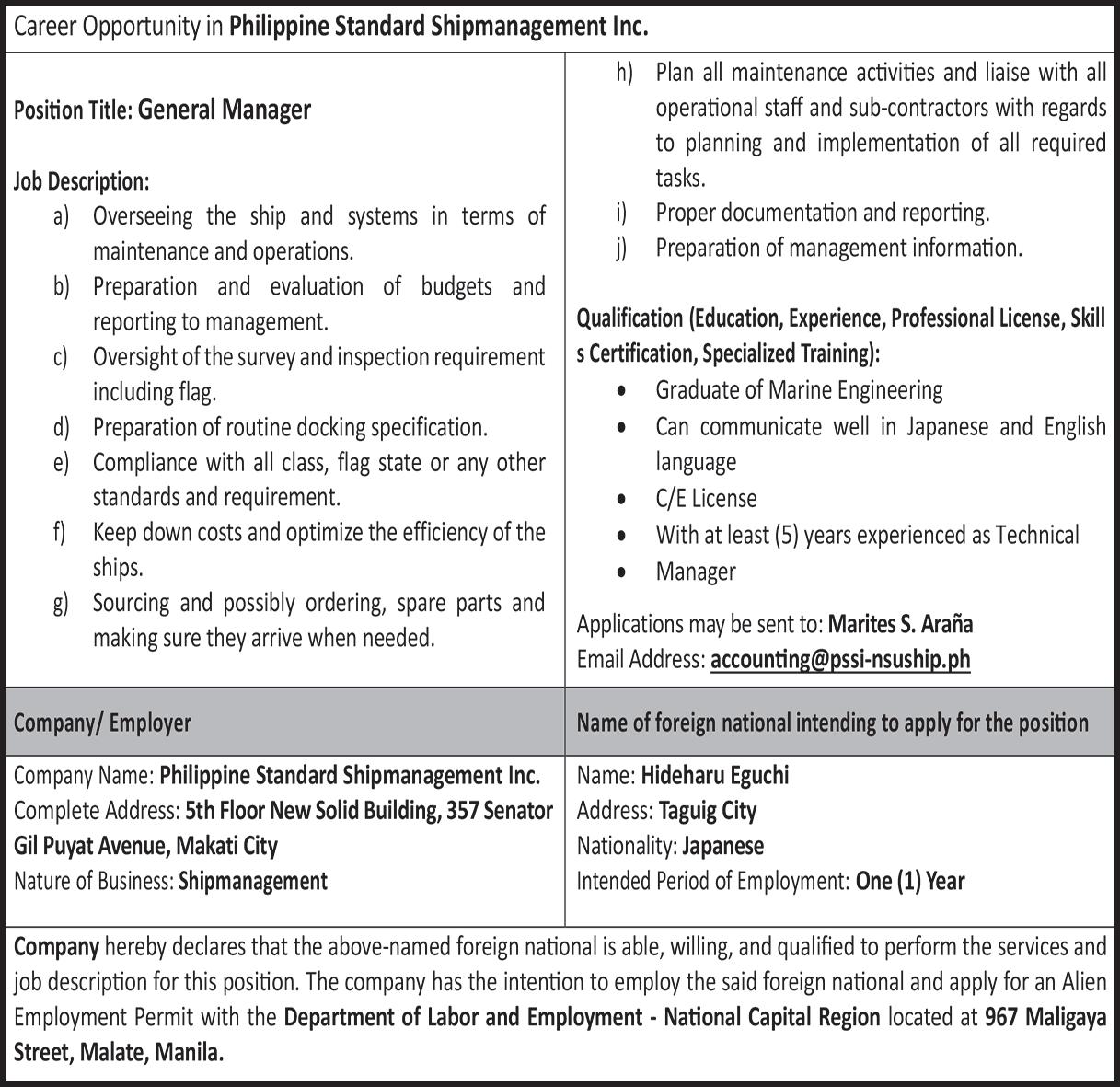
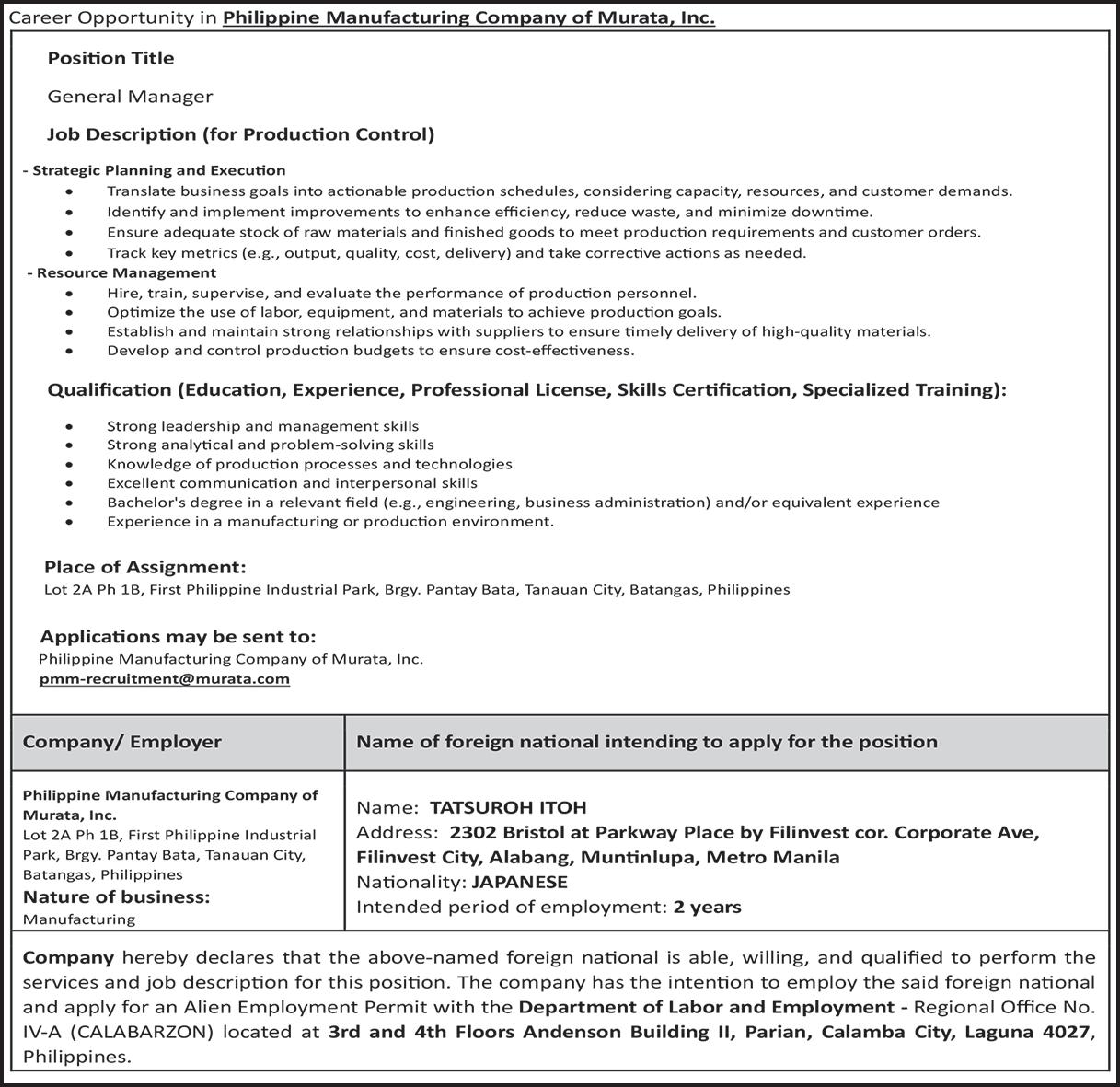
security control of Gaza after the war and implement US President Donald Trump’s proposal to resettle much of its population elsewhere through what the Israeli leader referred to as “voluntary emigration.”
Palestinians view the proposal as expulsion from their homeland, and human rights experts say the plan would likely violate international law.
Israel’s war in Gaza has killed more than 50,000 Palestinians, according to Gaza’s Health Ministry, which doesn’t say whether those killed are civilians or combatants but says more than half of those killed were women and children. Israel says it has killed around 20,000 militants, without providing evidence.
The war has left most of Gaza in ruins and at its height displaced around 90 percent of the population.
The war began when Hamas-led militants attacked southern Israel on October 7, 2023, killing around 1,200 people, mostly civilians, and taking 251 hostages, most of whom have since been released in ceasefire agreements and other deals. Israel rescued eight living hostages and has recovered dozens of bodies.
Netanyahu visits Hungary despite arrest warrant
NETANYAHU arrived in Hungary early Thursday on his second foreign trip since the world’s top war crimes court issued an arrest warrant against him in November over Israel’s war in Gaza.
Based in The Hague, Netherlands, the International Criminal Court has said there was reason
to believe Netanyahu and former Israeli Defense Minister Yoav Gallant used “starvation as a method of warfare” by restricting humanitarian aid to the Gaza Strip, and intentionally targeted civilians in Israel’s campaign against Hamas—charges that Israeli officials deny.
ICC member countries, such as Hungary, are required to arrest suspects facing a warrant if they set foot on their soil, but the court has no way to enforce that and relies on states to comply. As Netanyahu arrived in Budapest, Hungary said it will begin the procedure of withdrawing from the ICC.
Israeli strike reported in Lebanon AT least two people were killed early Friday in an apparent Israeli airstrike that hit an apartment in a multistory building in the coastal city of Sidon in Lebanon. An Associated Press photographer at the scene saw two bodies being carried out of the building by emergency responders.
There was no immediate statement from the Israeli military. It was the first time an airstrike had hit Lebanon’s third largest city since a tenuous ceasefire agreement brought an end to the latest Israel-Hezbollah war in late November. Israel has continued to carry out regular airstrikes targeting what it has said are facilities and officials of Hezbollah and allied groups since the ceasefire.
Melzer reported from Nahariya, Israel. Associated Press writers Fatma Khaled in Cairo and Edith M. Lederer at the United Nations contributed to this report.
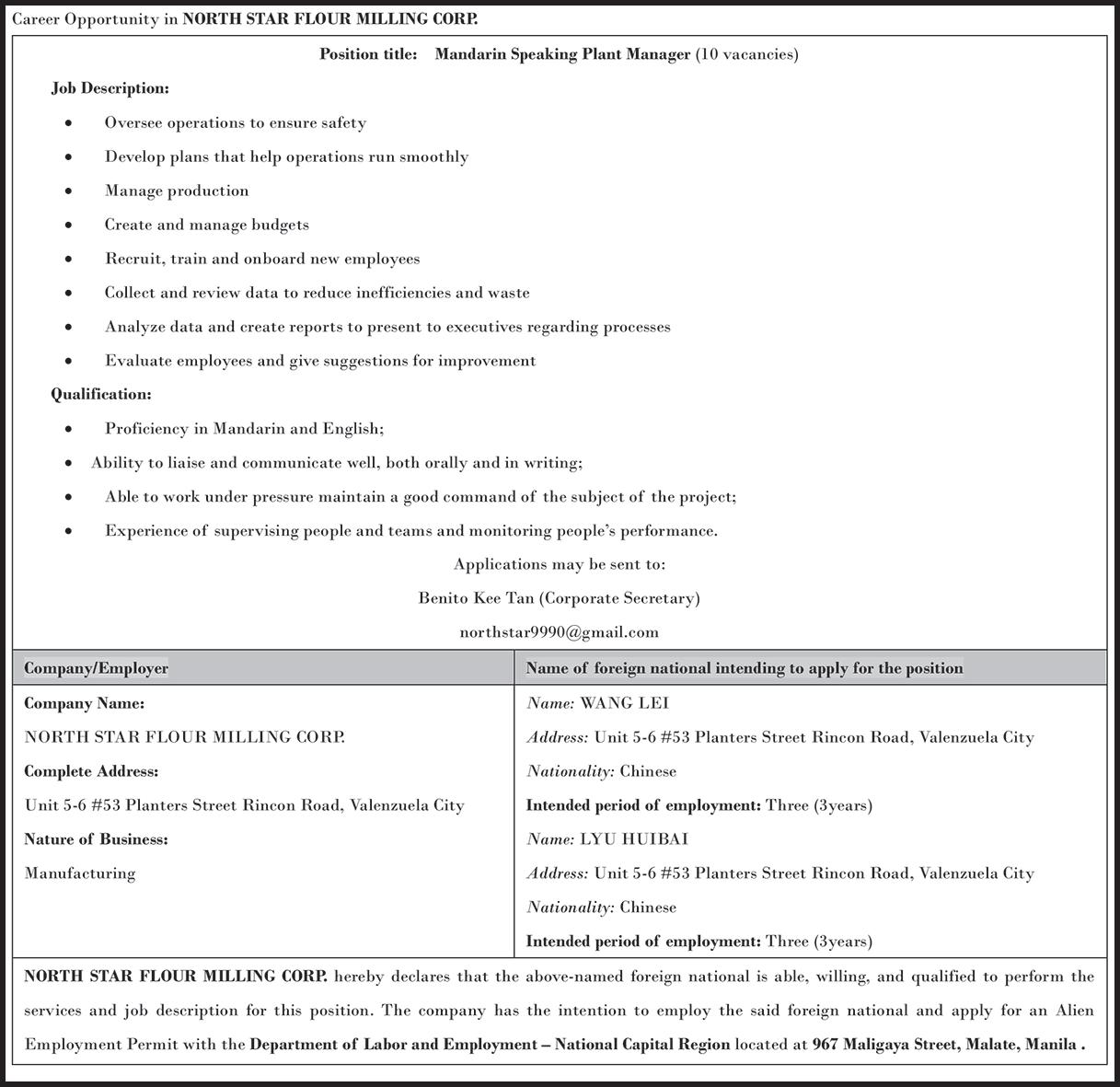

By David Rising The Associated Press
BANGKOK—The death toll from the earthquake that hit Myanmar nearly a week ago rose Thursday to 3,145 as search and rescue teams found more bodies, the military-led government said, and humanitarian aid groups scrambled to provide survivors medical care and shelter.
Information Minister Maung Maung Ohn also announced at a meeting in the capital, Naypyitaw, that 4,589 people were injured and 221 others were missing, state television MRTV reported.
The epicenter of the 7.7 magnitude quake on March 28 was near Mandalay, Myanmar’s second-largest city. It brought down thousands of buildings, buckled roads and destroyed bridges in multiple regions.
Local media reports of casualties have been much higher than the official figures. With telecommunications widely out and many
places difficult to reach, the numbers could rise sharply as more details come in.
A report issued Thursday by the UN Office for the Coordination of Humanitarian Affairs estimated that the earthquake and aftershocks have affected more than 17 million people across 57 of the country’s 330 townships, including more than 9 million who were severely affected.
“The coming days will be critical in determining the full scale of the disaster’s impact and the response required to meet the needs of millions affected,” it said.


UN Secretary-General António Guterres said UN humanitarian chief Tom Fletcher and special envoy Julie Bishop will arrive in Myanmar on Friday.
The secretary-general appealed to the international community to immediately step-up funding for quake victims “to match the scale of this crisis,” and urged unimpeded access to reach those in need.
“The earthquake has supercharged the suffering—with the monsoon season just around the corner,” he said.
The World Health Organization said that according to its initial assessment, four hospitals and one health center had been completely destroyed, while another 32 hospitals and 18 health centers had been partially damaged.
“With infrastructure compromised and patient numbers surging, access to health care has become nearly impossible in many of the worst-hit areas,” the UN said. “Thousands of people are in urgent need of trauma care, surgical interventions and treatment for disease outbreaks.”
A mobile hospital from India and a joint Russian-Belarusian hospital also were now operating in Mandalay.
With many left homeless by the quake, and many others staying away from their homes because of fears that ongoing aftershocks

will bring them down, workers in Naypyitaw labored in the 40 C (104 F) heat to busily erect big tents in open fields to provide some shelter.
In Mandalay, local residents gave slices of watermelon to Chinese volunteers taking a break from the high temperatures.
More than 1,550 international rescuers were operating alongside locals on Thursday, according to a statement from the military. Rescue supplies and equipment have been sent by 17 countries.
Myanmar’s military seized power in 2021 from the democratically


elected government of Aung San Suu Kyi, sparking what has turned into a civil war.
The quake worsened an already dire humanitarian crisis, with more than 3 million people displaced from their homes and nearly 20 million in need even before it hit, according to the United Nations.
As concerns grew that ongoing fighting could hamper humanitarian aid efforts, the military declared a temporary ceasefire Wednesday, through April 22.
The announcement followed unilateral temporary ceasefires announced by armed resistance
groups opposed to military rule. The military said that it would still take “necessary” measures against those groups, if they use the ceasefire to regroup, train or launch attacks.
Already on Thursday, there were reports from local media in Kachin state in the north of Myanmar that military attacks continued in several areas, but they couldn’t be independently confirmed.
Prior to the earthquake, the military was battling the Kachin Independence Army militia group.
The KIA on Wednesday also declared a ceasefire but reserved the right to defend itself. It was unclear how the reported fighting broke out.
The earthquake shook Kachin, but there have been no reports of damage there.
In Bangkok, where the quake brought down a skyscraper under construction, the search for survivors and bodies continued as Gov. Chadchart Sittipunt said that a possible sound of life was detected in the rubble. By near day’s end, however, nobody was found. Twenty-two people were killed and 35 injured in the city, mostly by the collapse of the unfinished building.
Jintamas Saksornchai contributed to this report.


By Evens Sanon & Dánica Coto The Associated Press
PORT-AU-PRINCE, Haiti—The leader of Haiti’s transitional presidential council tried to allay surging alarm among Haitians over rampant gang violence by acknowledging Thursday that the country has “become hell for everyone” and promising new measures to stop the bloodshed.
Fritz Alphonse Jean spoke a day after gunfire erupted in the capital, Port-au-Prince, as thousands of protesters demanding an end to gang violence clashed with police outside the offices of the council and the prime minister. It was the biggest protest held since the council was installed a year ago.
“Haitian people, you’ve spoken, and we’ve heard you,” Jean said. “We understand your misery. We know your pain and your suffering.”
More than 4,200 people have been reported killed across Haiti from July to February, and another 1,356 were injured, accord -
ing to the UN Recent gang violence also left more than 60,000 people homeless in one month alone, according to the UN’s International Organization for Migration. “This national address comes at a decisive moment for the transitional government,” said Diego Da Rin, an analyst with the International Crisis Group. “Protesters from various parts of the capital deliberately marched toward key government buildings to express their frustration.”
He noted that Jean’s address marked the first anniversary of the political agreement that es -


tablished the new transitional government’s structure and objectives. Since then, cohesion between political parties involved in creating that government “has now largely collapsed,” Da Rin said.
“The groups that originally supported this government are now calling for a change in leadership,” he noted.
The council has not addressed those concerns, which also have been voiced by the international community.
During his public address, Jean rattled off a list of neighborhoods that gangs have recently attacked.
“You lost your homes, you lost your businesses, you lost your jobs, they raped you, they raped your kids. The criminal gangs killed a lot of people,” he said. “The fight against the darkness is not insignificant. But we are not insignificant ourselves… It’s nothing compared with the battle we fought to get out of slavery.”
Jean referenced how Haiti became the world’s first free Black republic in a bid to rally support from Haitians, asking them to help law enforcement officials and eschew efforts by gangs to recruit people, especially children.
“Don’t let people profit from your distress and drag you in bad directions,” he said.
Jean said the council would take “important measures” to help quell
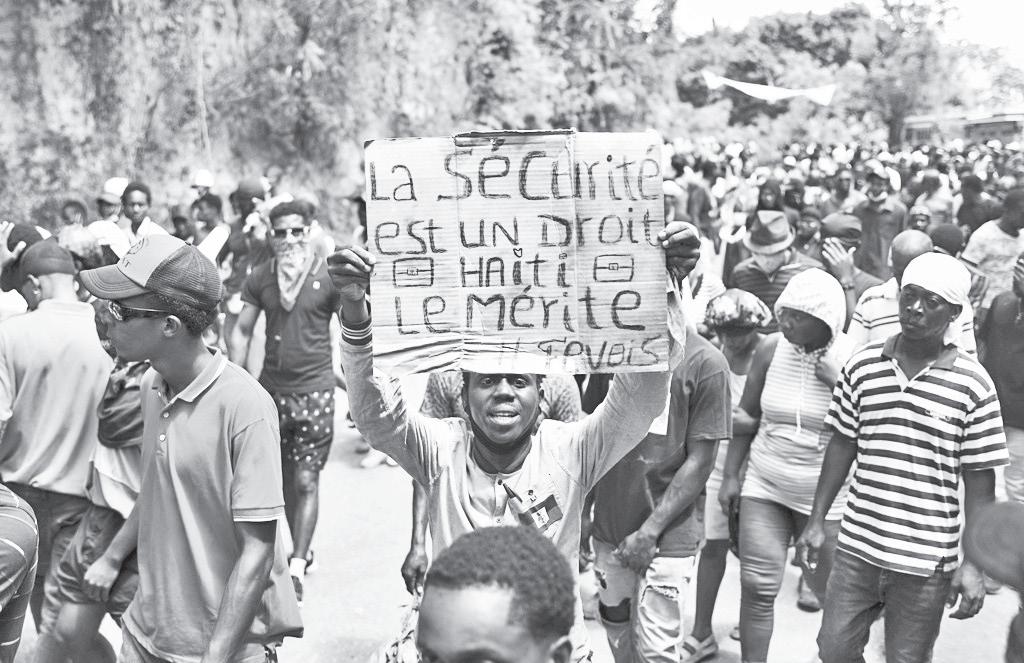
the persistent violence, including setting aside a special budget and incorporating agents from an armed state environmental group known as BSAP.
“The council asks the prime minister and the police to take these measures without delay,” Jean said. “We are telling everyone in this government that we are at war.”
Jean did not provide further details, including how much money would be set aside for the budget and how many BSAP agents would join the fight against gangs.
Jean also said that the electoral council is working so that Haiti can have new leadership


once the transitional presidential council’s term ends on Feb. 7 next year. He added that officials are taking steps so that the diaspora can vote in what would be Haiti’s first general elections held in almost a decade.
Haiti has not had a president since former President Jovenel Moïse was assassinated in 2021, with gangs becoming increasingly powerful in the aftermath.
Last year, a UN-backed mission led by Kenyan police arrived in Haiti to help local authorities quell gang violence, but the mission remains understaffed and underfunded, with only about 40 percent of the 2,500 personnel originally envisioned.
Jean’s speech did not appear to resonate with those most affected by gang violence.
Mario Jean-Pierre, a 53-yearold street vendor who sells used clothes that he carries on his back, said he wasn’t impressed by the public address.
Gang violence recently forced him and his two children to move into a makeshift shelter in the yard of Haiti’s Ministry of Public Works.
“Flying bullets are coming at you in different directions,” he said. “I’ve seen a few people in this camp who were hit by bullets as they slept.”
He worries constantly about his children’s safety and said he didn’t believe Jean’s pledge to improve security.
“This speech is not any different from other speeches,” he said. “They keep making promises and don’t accomplish any of the promises they’ve made.”
Da Rin noted that throughout his speech, Jean emphasized the transnational dimension of Haiti’s security crisis, stressing that the gang issue is part of a broader problem involving money laundering and arms and drugs trafficking that spans several countries.
“By framing Haiti’s gang problem as a matter of transnational crime that goes beyond Haiti’s borders, the president seems to be seeking to rally international support for further security assistance that matches the escalating threats,” he said.
Coto reported from San Juan, Puerto Rico.
Lula faces plummeting approval as Brazilians grapple with soaring food prices and crime
By Eléonore Hughes The Associated Press
RIO DE JANEIRO—Brazil’s President Luiz Inácio Lula da Silva was once called the most popular politician on Earth by then-US President Barack Obama. Those times are long gone.
Halfway through his latest four-year term, Lula’s approval rating has plunged down to levels never before seen in any of his three administrations. Brazil’s economy is growing and its unemployment is decreasing, but people are complaining about higher food prices and crime.
Lula’s approval rating has dropped to 24 percent, according to the country’s most prominent pollster Datafolha in its latest February poll, which interviewed 2,007 people across Brazil with a margin of error
of 2 percentage points. That is an all-time low across his time in office from 2003 to 2010, and since he took office again in 2023. The previous record was 28 percent in 2005. Surveys by other firms also show a rise in discontent. And in an apparent attempt to claw back support, the government on Thursday is hosting an event in the capital, Brasilia.
“The objective is to present the achievements of the Federal Government in the first two years,” the presidential palace said in a statement this week.
A political landscape of upheaval
LULA’S difficulties come against a Brazilian political landscape in upheaval, with
See “Lula,” A17

By María Verza & Fabiola Sánchez The Associated Press
EXICO CITY—Mexico
Mcelebrated Thursday having dodged the latest round of tariffs from the White House taking aim at dozens of US trading partners around the world, but was also quickly reminded that in a global economy the effects of uncertainty can’t be entirely avoided.
President Claudia Sheinbaum said the free-trade agreement signed by Mexico, Canada and the US during Trump’s first administration had shielded Mexico. Now her government will focus on the existing 25 percent US tariffs on imported autos, steel and aluminum, while accelerating domestic production to safeguard jobs and reduce imports.
“During my last call with President Trump, I said that, in the case of reciprocal tariffs, my understanding was that there wouldn’t be tariffs (on Mexico), because Mexico doesn’t place tariffs on the United States,” Sheinbaum said.
Economy Secretary Marcelo Ebrard noted that despite having free-trade agreements with the US, many countries were targeted
by the tariffs US President Donald Trump announced Wednesday on what he dubbed “Liberation Day.” Trump framed the tariffs as a way to bring manufacturing jobs back to the US.
Noting that Mexico escaped the latest round of tariffs, Ebrard said swaths of Mexican exports including agricultural products like avocados, clothing and electronics will continue to enter the US without import duties.
Ebrard said it wasn’t a given that the free-trade agreement would be preserved, “because in a new commercial order based on tariffs it’s very hard for a free-trade agreement to survive.” The fact that it did, puts Mexico at a competitive advantage, because “it’s going to be cheaper to produce in Mexico than in any other part of the world.”
Oscar Ocampo, a specialist in foreign trade at the Mexican Institute for Competitiveness, a think tank, said “the United States is closing off to the rest of the world and in relative terms closing off less with Mexico and that is an opportunity.”
Sheinbaum is seeking to use that opportunity to encourage companies producing in Mexico who had not been exporting under the free-trade agreement for
various reasons to take the necessary steps to qualify. She cited major German auto producers as an example.
Qualifying for the free-trade agreement could involve anything from doing paperwork to making adjustments to the sourcing of a product.
Despite Trump’s latest tariffs not being imposed on Mexico, the uncertainty they created and the interconnectedness of the North American auto supply chains meant it didn’t take long for the effects to touch Mexico.
Stellantis, maker of auto brands including Dodge and Jeep, announced that it would pause production at its assembly plant in Toluca west of Mexico City for the month of April while it assesses the tariffs’ impact on its operations. The company has more than 15,000 employees in Mexico. A similar temporary production halt was scheduled for an assembly plant in Canada and some 900 workers were to be temporarily laid off across several plants in the United States.
That uncertainty is part of the reasons why Sheinbaum is pushing Plan Mexico, an initiative to promote and cultivate more domestic production.
As an example, she cited a
collaboration between her government, local universities and Mexican companies Megaflux and Dina to produce electric buses for public transportation.
Ebrard said recently that the buses represent not only a technological advance in Mexico, but also a “strategic decision” in favor of Mexico’s industrial sovereignty.
At a factory in Mexico City, the electric buses called Taruk—trailrunner in the Indigenous Yaqui language—are already in production. Megaflux Director General Roberto Gottfried said the company hopes to deliver some 200 by year’s end.
He noted that some 70 percent of the Taruk’s components are produced in Mexico, including its motor, but the lithium batteries that power them come from China.
In a country where one out of every three people use public transportation every day, developing this sector domestically is critical, Gottfried said.
Despite the global economic challenges presented by the uncertainty caused by tariffs, he said, Mexico’s large internal market gives the initiative a competitive advantage to develop and weather the storm.
By Collin Binkley, Annie Ma & Makiya Seminera
The Associated Press
ASHINGTON—A crackdown on for -
Weign students is alarming colleges, who say the Trump administration is using new tactics and vague justifications to push some students out of the country.
College officials worry the new approach will keep foreigners from wanting to study in the US.
Students stripped of their entry visas are receiving orders from the Department of Homeland Security to leave the country immediately—a break from past practice that often permitted them to stay and complete their studies.
his predecessor and bitter rival former President Jair Bolsonaro due to stand trial on charges that the right-wing politician attempted a coup.
The plunge in support also comes as Lula, 79, weighs whether to run for reelection next year.
For many observers, the increase in the cost of food is a top reason for Lula’s fall in popularity. Food and drinks were nearly 8 percent more expensive in 2024 compared to the previous year, according to Brazil’s national statistics agency.
Rising food costs
“ FOOD inflation has a direct impact on people’s lives,” said Carla Beni, a professor of economics at Getulio Vargas Foundation, pointing especially to the rise of the cost of meat, a staple of Brazilians’ diet.
Beni said prices have soared due to the impact of climate change on crops and the strengthening of the dollar against the real.
An uptick in food prices particularly affects the poor—Lula’s historical support base. A poll by private firm Genial/Quaest released Wednesday showed a surge in disapproval among women, Black people and in Brazil’s poorer northeast. In six months, the percentage of respondents who disapprove of Lula’s administration in the northeast jumped from 26 percent to 46 percent. And more women have a poor opinion of the government than they do a positive one.
“Not only are things expensive, but we’re
Some students have been targeted over pro-Palestinian activism or criminal infractions—or even traffic violations.
Others have been left wondering how they ran afoul of the government.
At Minnesota State University in Mankato, President Edward Inch told the campus Wednesday that visas had been revoked for five international students for unclear reasons.
He said school officials learned about the revocations when they ran a status check in a database of international students after the detention of a Turkish student at the University of Minnesota in Minneapolis. The State Department said the detention was related to a drunken driving conviction. “These are troubling times, and this
also living in a dangerous country,” said Anderson Vianna, 45, a sales representative who lives Rio de Janeiro’s low-income northern zone. “If you have your phone in hand, you can’t relax,” added the man who voted for Lula in 2002, 2006 and 2022. To reign in food inflation, Vice President Geraldo Alckmin announced on March 6 that the government would reduce import taxes to zero on a series of products, including meat and coffee.
A communication problem BUT the measure does not appear to have turned the public’s perception of the government. João Feres, a political scientist at Rio de Janeiro State University, said Lula’s government has a myriad of public policies but “the problem is communicating the results of these policies.”
A blow to Lula came in January, when his government said it would increase oversight of financial transactions, including Brazil’s popular instant payment system PIX.
That sparked a flurry of fake news pushed by far-right politicians close to Bolsonaro, who said the government planned to impose a new tax on PIX payments. The administration denied the accusation, but ended up backtracking on the step.
“That was the first point that really damaged Lula’s image,” said Paulo Feldmann, an economist at the University of Sao Paulo.
Brazilians concerned with crime CRIME and violence are other top concerns.
“Since the end of restriction of movement due to the Covid-19 pandemic, it’s in first place” in the ranking of Brazilians’
situation is unlike any we have navigated before,” Inch wrote in a letter to campus.
President Donald Trump campaigned on a promise to deport foreign students involved in pro-Palestinian protests, and federal agents started by detaining Columbia graduate student Mahmoud Khalil, a green-card-holder and Palestinian activist who was prominent in protests at Columbia last year. Secretary of State Marco Rubio said last week students are being targeted for involvement in protests along with others tied to “potential criminal activity.”
In the past two weeks, the government apparently has widened its crackdown. Officials from colleges around the country have discovered international students have had their entry visas revoked and, in many cases,
worries, said Marcos Calliari, the country’s director of pollster IPSOS.
Over the weekend, the video of an influencer inadvertently filming the moment her phone was stolen at the Lollapalooza festival in Sao Paulo went viral. Almost one in 10 Brazilians had their phone stolen between July 2023 and June 2024, according to Datafolha.
Lula has sharpened his tone against thieves in recent weeks. “We will not allow criminals to take over our country,” he said on March 19.
The justice ministry is planning to send a bill to Congress that would increase the maximum sentence for receiving and
their legal residency status terminated by authorities without notice—including students at Arizona State, Cornell, North Carolina State, the University of Oregon, the University of Texas and the University of Colorado.
Some of the students are working to leave the country on their own, but students at Tufts and the University of Alabama have been detained by immigration authorities—in the Tufts case, even before the university knew the student’s legal status had changed.
The Associated Press writers Steve Karnowski in St. Paul, Minnesota, and Angeliki Kastanis in Los Angeles contributed to this report.
benefiting from stolen cellphones from eight to up to 12 years, it said in a statement on Friday.
Lula’s government is also preparing a wider bill on security.
Preparing an income tax cut for the poor
TO woo back voters, the government is also counting on a proposal to cut taxation for the poor. Mid-March, the administration sent a bill to Congress that seeks to exempt individuals earning up to 5000 reais (around $880) per month from income tax, up from around 2,300 reais currently.

Orbán says Hungary is quitting the ICC to end its ‘half-hearted’ membership
By Justin Spike The Associated Press
BUDAPEST, Hungary—Hungary was never fully committed to the International Criminal Court, Prime Minister Viktor Orbán said on Friday, a day after his government announced a decision to quit the global tribunal for war crimes and genocide.
Speaking on state radio, Orbán offered justification for why Hungary did not detain Benjamin Netanyahu on Thursday when Israel’s prime minister arrived in Budapest for a state visit despite an ICC arrest warrant.
“Hungary has always been halfhearted” in its ICC membership, said Orbán, who on Thursday said the ICC was “no longer an impartial court, not a court of law, but a political court.” Hungary joined the ICC during Orbán’s first term as prime minister in 2001.
“We signed an international treaty, but we never took all the steps that would otherwise have made it enforceable in Hungary,” Orbán said, referring to the fact that Hungary’s parliament never promulgated the court’s statute into Hungarian law.
The court, based in The Hague, Netherlands, issued a warrant for Netanyahu’s arrest in November on suspicion of crimes against humanity for his conduct of Israel’s war in the Gaza Strip. Signatories to the ICC, such as Hungary, are required to arrest any suspects facing a warrant if they set foot on their soil.
The ICC and other international organizations have criticized Hungary’s defiance of the warrant against Netanyahu. Days before the Israeli leader received a red carpet welcome with full military honors in Hungary’s capital, the president of the court’s oversight
If Congress approves the bill, observers say it could be a big win for Lula, though it’s uncertain whether it will restore his popularity. With Lula struggling in the polls and Bolsonaro barred from running until
body wrote to the government in Hungary reminding it of its “specific obligation to comply with requests from the court for arrest and surrender.”
Judges at the ICC have in the past dismissed similar arguments that failure to promulgate the court’s statute exempts countries from complying with its rulings.
Hungary’s decision to leave the ICC, a process that will take at least a year to complete, will make it the only country in the 27-member European Union that is not a signatory to the court. With 125 current signatory countries, only the Philippines and Burundi have ever withdrawn from the court as Hungary intends.
The Hungarian leader, regarded by critics as an autocrat and the EU’s most intransigent spoiler in the bloc’s decision-making, is seen as using some of the tactics that Netanyahu has been accused of employing in Israel: subjugation of the judiciary, antagonism toward the EU and cracking down on civil society and human rights groups. He is also an ally of US President Donald Trump and Russian President Vladimir Putin, both critics of the ICC.
In March 2023, the ICC issued an arrest warrant for Putin for war crimes, accusing him of responsibility for the abductions of children from Ukraine.
Trump in February issued sanctions against the court over its investigations into Israel’s conduct of the war in Gaza, which began when Hamas-led militants attacked southern Israel on October 7, 2023, killing around 1,200 people, mostly civilians, and taking 251 hostages.
Molly Quell in The Hague contributed to this report.
2030, the next election is much more unpredictable than the previous one, Beni said.
Vianna, the sales representative, said he is disappointed and is not sure he would vote for Lula again. “We need a renewal.”

By Aldrin Quinto
CITY of Santa Rosa,Laguna—Competing against some of the best in the continent allowed Alas Pilipinas’ young stars Khylem Progella and Sofia Pagara to shine, and while it also exposed the teams’ weaknesses, coach Joao Luciano Kiodai noted it was a good thing.
“We had big opportunities but then we missed out on them,” said Brazilian Kiodai. “They really still lack experience. But they were good, they showed courage to try and take the leap. That’s good.”
Progella and Pagara’s sterling performances in the Rebisco Asian Volleyball Confederation (AVC) Beach Tour Nuvali Open came to an end at the quarterfinal stage with a narrow loss to highly-rated Australian pair of Elizabeth Alchin and Georgia Johnson, 18-21, 1921, on Friday at the Nuvali Sand Courts. Earlier, the University of Santo Tomas duo took down China’s Yan Xu and Zhou Mingli, 22-20, 22-20, in a tense Round of 16 after going 1-1 in pool play. The matches again proved the young spikers—Progella is 19 and Pagara 20— can hold their own against well-traveled AVC and FIVB-rated teams, taking early leads and scoring in bunches.
Unfortunately, it also put a spotlight on their lack of experience in big events, as they tend to lose focus when rivals catch fire.
Progella and Pagara also admitted they need to work on their tactics in closeout situations.
The duo had finished in the quarterfinals of the FIVB Futures Qingdao last year and Progella wanted a better finish here, but said their performance for the week was fine considering they prepared for only a few weeks.
“We have no regrets,” Pagara said. “We showed we have what it takes [against Australia], we held leads. In the end part of the matches, however, we struggled.”
Kiodai said exposure to international events such as the Nuvali Open are important for the development of
teams, especially players like Progella and Pagara who have the University Athletic Association of the Philippines as their mother league and still cannot fully commit to the national program.
“Hopefully I can get in touch with them more. They have a lot to give for the Philippines.”
“Tournaments like these are crucial, we want them to be part of this so that when the time comes that they can fully commit to the Philippine team, they are fully exposed to all of this.”
PHL takes down China
KHYLEM PROGELLA and Sofia Pagara earlier overcame tense moments over China’s top pair of Yan and Zhou to become the only Philippine pair to reach the Round of Eight.
In an error-plagued endgame where they wasted match points with four consecutive service errors, Progella and Pagara managed to pull off impressive plays to regain control and eventually put away the top Chinese pair in the tournament organized by the PNVF led by its president Ramon “Tats” Suzara, who is also chief of the AVC.
“We had trouble finding the mark on serve when trying to close them out. No excuses but the heat was too much,” Progella said.
The young spikers from University of Santo Tomas showed poise against Yan and Zhou, who have the fourth-highest rating in this field, registering three block points against none by their rivals.
Progella and Pagara led by as many as four points in the first set and had to rally from four behind in the second.
“They can become a little emotional during these tough situations, but they come through,” Alas Pilipinas beach volleyball coach Joao Luciano Kiodai of Brazil said.
“I think we are still chasing our best, and I think this is good, we need it for future matches. And this is important, that we are able to win even when we didn’t play our really really really best,” Kiodai said.
Progella and Pagara take on Australia’s Elizabeth Alchin and Georgia Johnson, the second-highest ranked
team in the tournament, for a place in the semifinals.
Alchin and Johnson beat Thailand’s Samitta Simarongnam and Salinda Mungkhon, 19-21, 21-13, 15-10.
Brutal conditions in April sun
ALAS PILIPINAS’S top pair in men’s play had a foot in the next round when James Buytrago and Rancel Varga seized the opening set and held the upper hand midway through the second against New Zealand’s John McManaway and James Sadlier.
Unfortunately, in men’s competition, the home team could not hold on under the brutal conditions—38.2 deg heat with 46.9 relative humidity.
The Filipinos wound up forfeiting the match as Buytrago could not continue due to leg cramps, with the score at 33-35, 18-21, 6-13.
“It’s super hot, for any athlete it would be hard to handle that heat. You feel tired and you feel the pain more. Then the cramps happen, but it is what it is. That is the sport. That’s beach volleyball,” Kiodai said.
Two Alas Pilipinas women’s pairs also bowed out at the Round of 16 stage, with Alexa Polidario of the Air Force and Lorien Gamboa of the University of Santo Tomas dispatched by Japan’s Saki Maruyama and Miki Ishii, 21-12, 21-10.
It was a short first stint with Alas Pilipinas for Sunnie Kalani Villapando, who played Division I National Collegiate Athletic Association, as she and Philippine Coast Guard’s Jenny Gaviola bowed to Japan’s Asami Shiba and Reika Murakami, 6-21, 15-21.
Villapando, who played for Stanford before joining University of Southern California on her fifth year in college, is eager to get back in action and deliver for the Philippines.
“This won’t be the last. We’ll be training and competing, we’re looking forward to the Southeast Asian Games.”
THE road to redemption comes early for Magnolia and San Miguel Beer as the Philippine Basketball Association Philippine Cup opens Saturday at the Ninoy Aquino Stadium.
Both teams were kicked out of the Finals race in the Commissioner’s Cup won by TNT Tropang Giga over Barangay Ginebra San Miguel in seven games.
And they’re just too eager to kick off their all-Filipino campaign with Magnolia taking on Blackwater at 5 p.m. and San Miguel Beer squaring off with NLEX at 7:30 p.m.
“The entire team watched the Finals [Commissioner’s]

because I want them to realize what we missed,” said Magnolia coach Chito Victolero, whose last trip to the championship was in the 2024 Commissioner’s Cup that San Miguel Beer won. “We just want our players to more,” he said. “We started well in the eliminations and quarterfinals [Commissioner’s Cup], but this time we want to go deeper.”
Magnolia has kept its roster intact Zav Lucero, Ian Sangalang and Calvin Abueva manning the shaded and Mark Barroca, rookie Jerom Lastimosa and Paul Lee orchestrating plays. Blackwater, on the other

hand, will have rookie Sedrick Barefield, new acquisitions BJ Andrade and Prince Caperal.
San Miguel Beer, meanwhile, wants to get back the Philippine Cup the Beermen lost to the Meralco Bolts in six games two seasons ago.
With additional power forward JM Calma reinforcing June Mar Fajardo in the paint, the Beermen are expected to give the Road Warriors of Jong Uichico and Robert Bolick problems. Josef Ramos



C
REAMLINE just gets better with age but Petro Gazz is bubbling with confidence that their time has come in the Premier Volleyball League All-Filipino Conference.
The Angels aren’t just hungry, they’re famished, and they’re returning to the best-of-three Finals seeking redemption against the Cool Smashers who denied them the title in 2023 and riding a mountain of a momentum from an emphatic sweep of the semifinal round. That sweep included a moraleboosting four-set triumph over the
defending champions Cool Smashers. Led by the tactical mind of coach Koji Tsuzurabara, the Angels’ Finalsclinching win over the Akari Chargers flashed standout performances not just from their stars—Brooke Van Sickle, Myla Pablo, MJ Phillips and Jonah Sabete—but also from the bench—Joy Dacoron, Aiza Pontillas, Ranya Musa and Nicole Tiamzon.
There’s Van Sickle—the explosive scorer making her first-ever Finals appearance—and the entire Petro Gazz squad thathas rallied around her
throughout the conference.
“We’re rallying behind Brooke since this is her first Finals,” said Pablo, who has also rediscovered her fierce form when it matters most.
Creamline? The Cool Smashers are out to keep their dynasty.
Ten championships in 13 Finals appearances, sweep of the last four PVL titles, undefeated in the AllFilipino format since its addition to the calendar in early 2023—the Cool Smashers aren’t just champions, they’re the standard.

REIGNING back-to-back champion Pampanga and Caloocan notched contrasting wins in the Manny Paquiao presents 1xBet-Maharlika Pilipinas Basketball League 2025 Season on Thursday at the San Andres Sports Complex.
The Pampanga Giant Lanterns led throughout and routed Manila Batang Quiapo, 127-95, in the nightcap, while the Caloocan Batang Kankaloo came from behind to nip the Gensan Warriors, 75-72, earlier in the day.
Pampanga and Caloocan raised their records to 4-1 won-lost to stay close to pacesetters Nueva Ecija and Rizal Xentromall, both 5-0, and San Juan (30) in the round-robin elimination phase of the 30-team tournament.
Powered by Larry Muyang and four others, the Giant Lanterns pulled away at 66-38 behind a 14-point run and led by as many as 83-47 in the freewheeling encounter.
Muyang, from Santa Ana in Pampanga, poured in 35 points and grabbed 12 rebounds and Archie Concepcion added 19 points spiked by 3 triples with seven rebounds and seven assists.
The other Giant Lanterns who shone were Raymond Binuya with 13 points and 13 assists, John Lloyd Clemente with 13 points and five assists and Chris Lalata with 12 points and 11 rebounds.
Manila, which fell to 1-5, got 19 points and nine assists from homegrown Ashley Faa, 12 points and nine rebounds from Richard Albo
and 14 popints from Jan Baltazar, 13 points from Yvan Ludovice and 10 points from Achie Inigo. Caloocan erased an eight-point deficit with a minute and 24 seconds left to climb to joint fourth with Pampanga, Pangasinan, Abra, Quezon and Zamboanga.
With Chris Bitoon pouring nine of his game-high 24 points in that span, the Caloocan Batang Kankaloo dropped 13 while holding Gensan to just two to notch their fourth